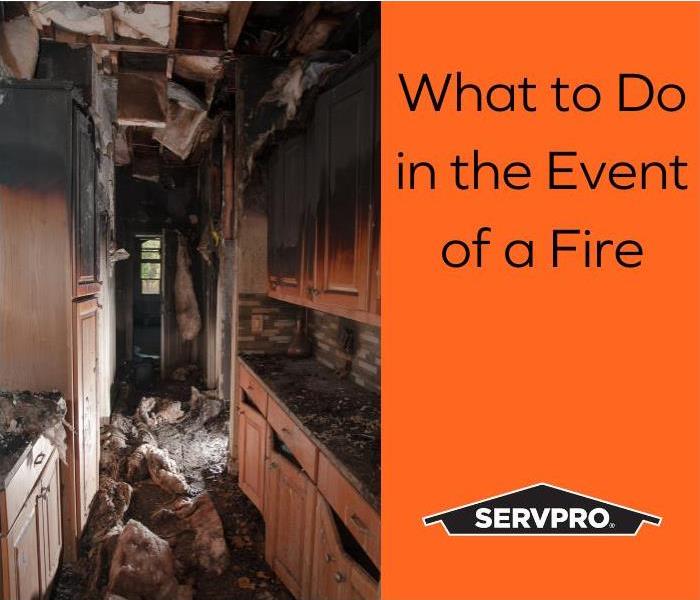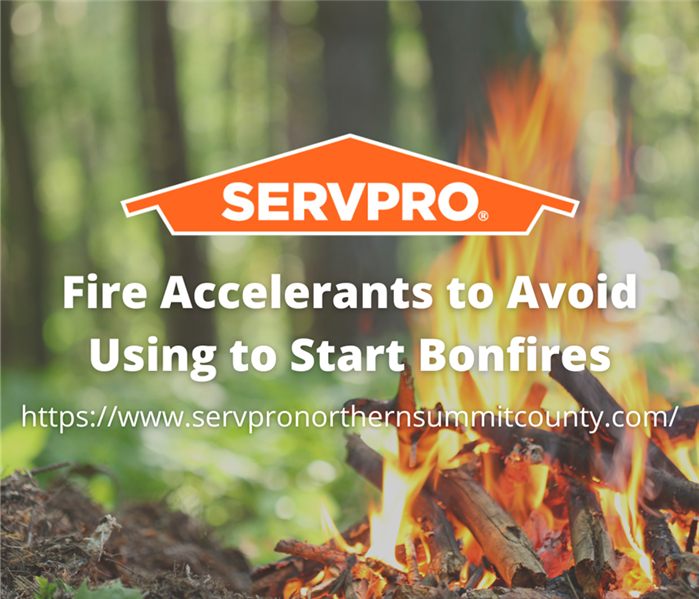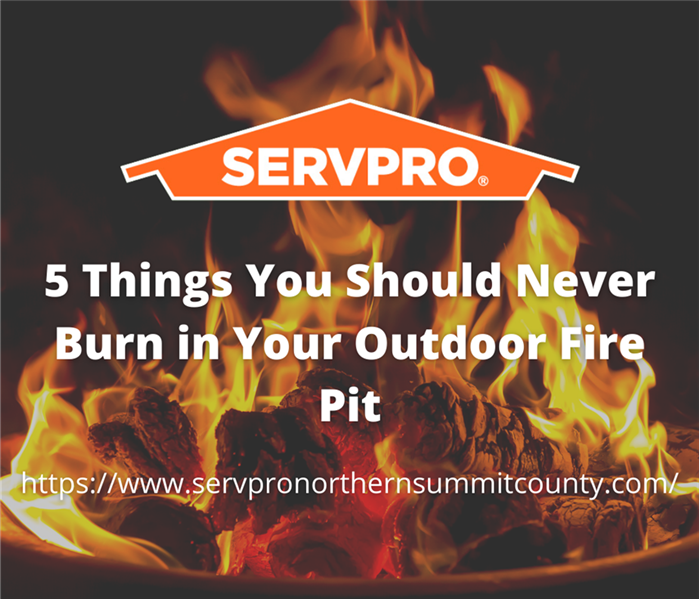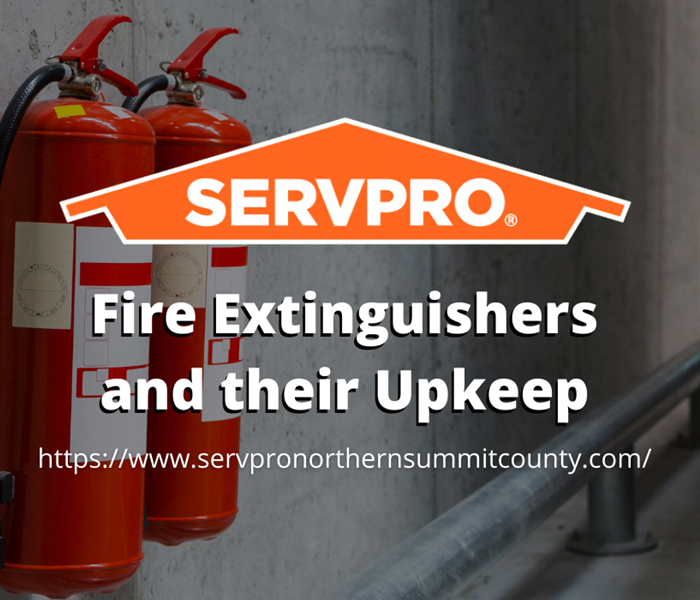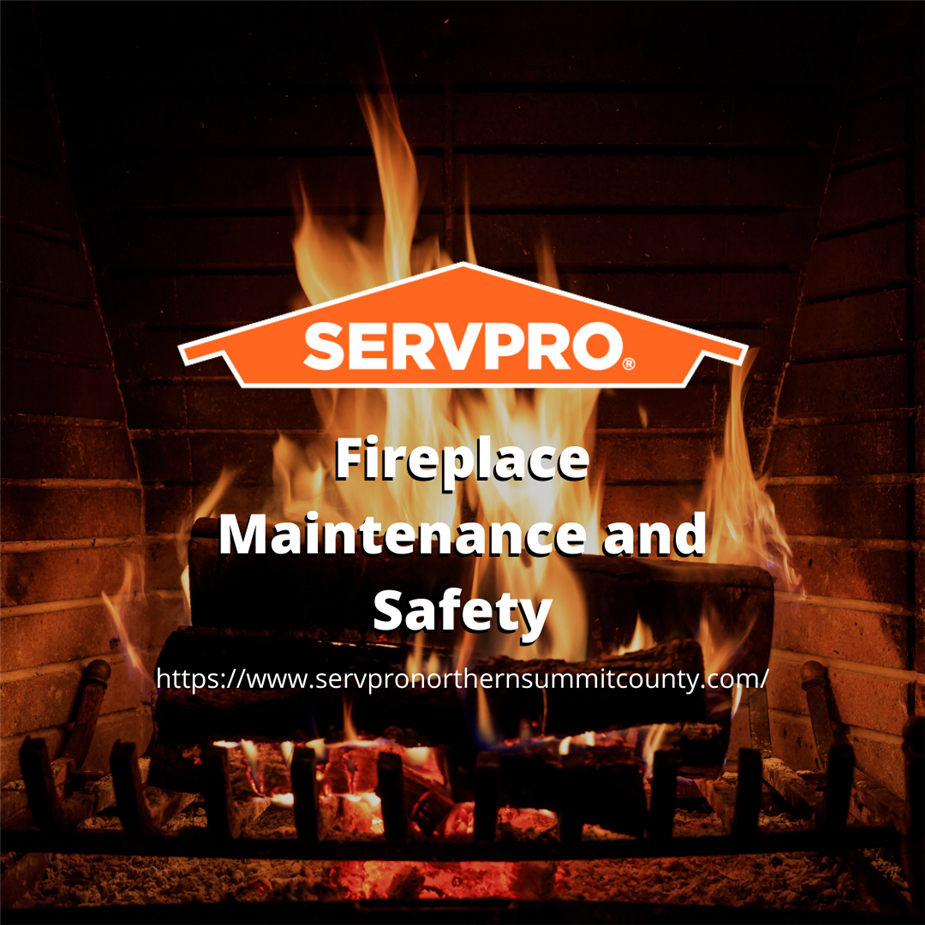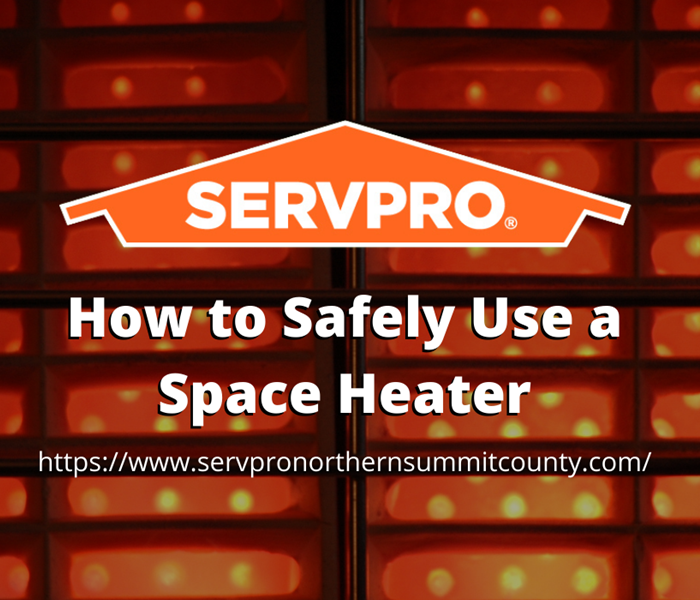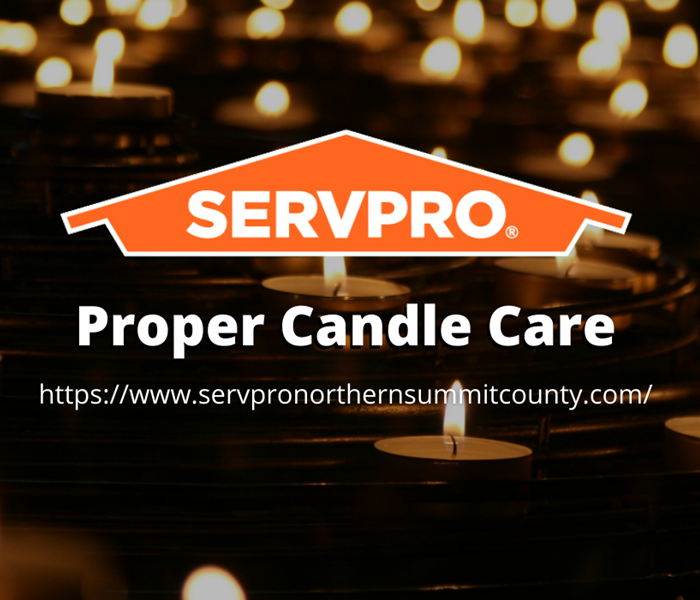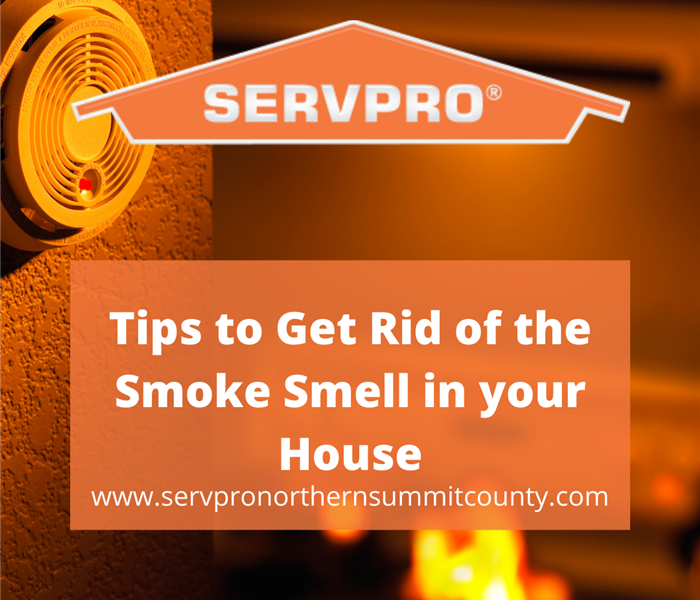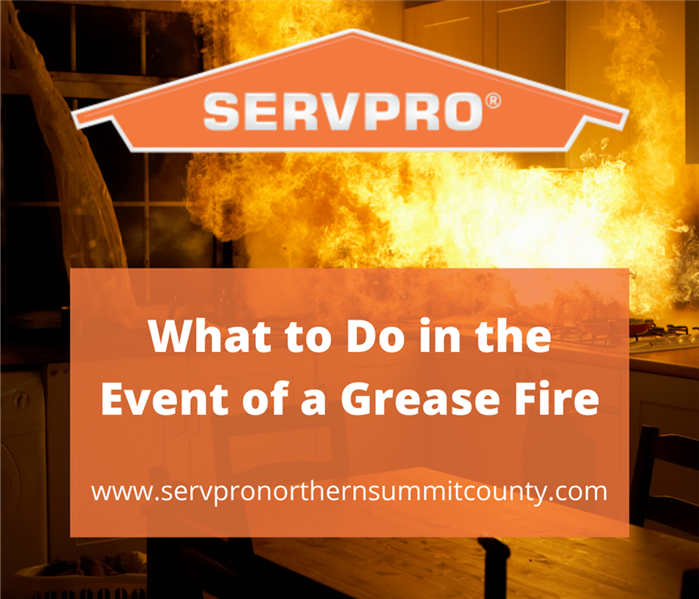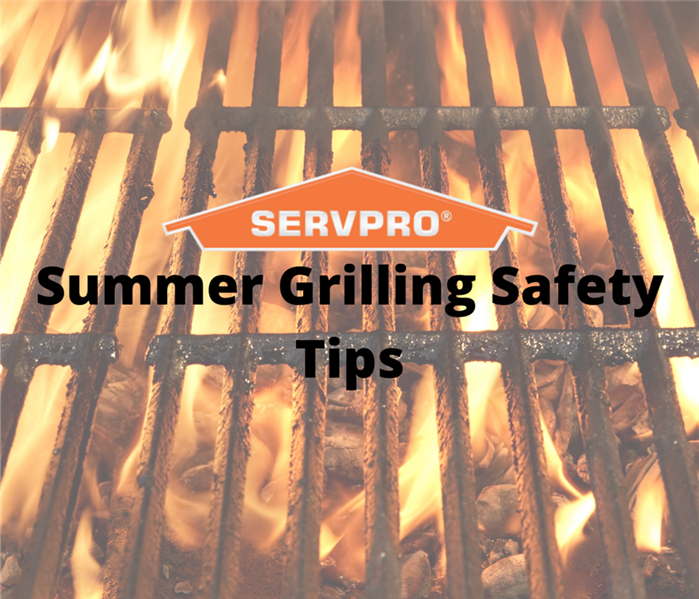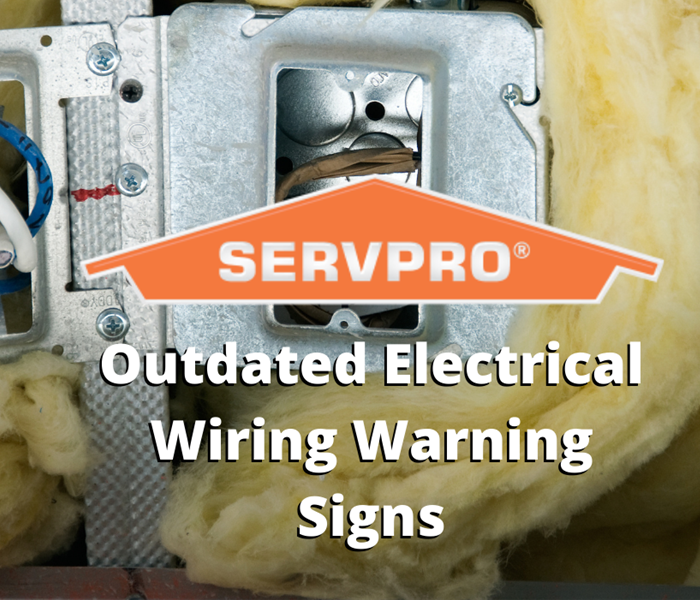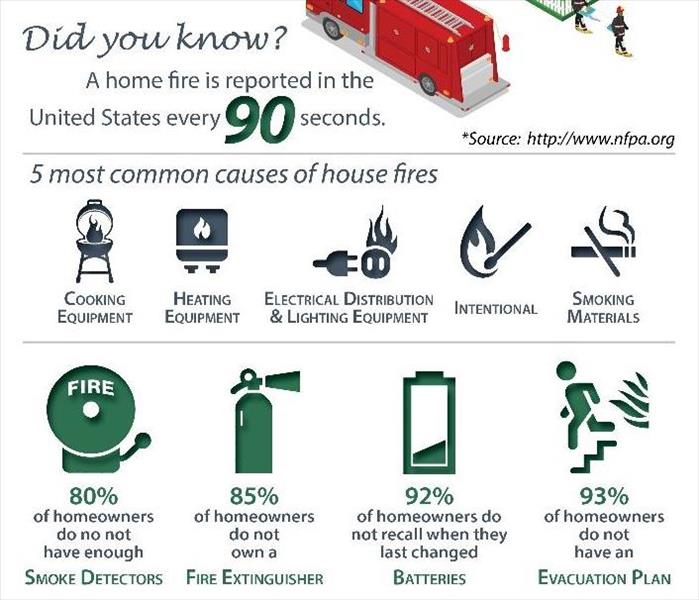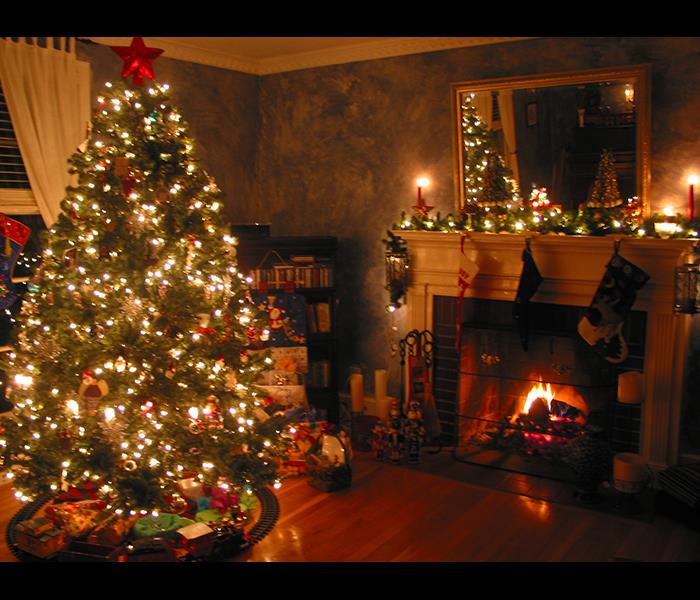Recent Fire Damage Posts
The Hidden Dangers of Glass Cooktop Stoves
8/8/2024 (Permalink)
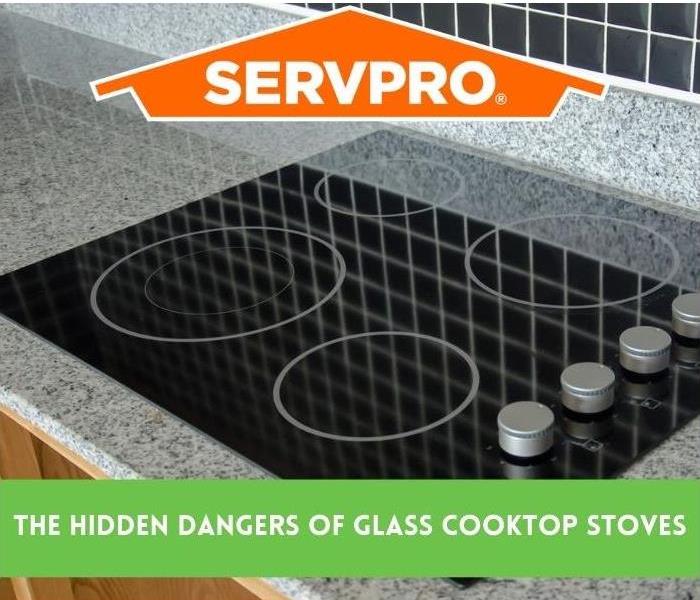 Glass cooktops come with a set of unique risks that every user should be aware of.
Glass cooktops come with a set of unique risks that every user should be aware of.
Glass cooktop stoves have become a popular choice in modern kitchens due to their sleek design and easy-to-clean surfaces. However, while they offer aesthetic appeal and convenience, these stoves come with a set of unique risks that every user should be aware of. In this blog, we'll explore the potential dangers associated with glass cooktop stoves and provide tips on how to minimize these risks to ensure a safe cooking experience.
1) Fragility and Cracking
One of the most significant concerns with glass cooktop stoves is their susceptibility to cracking. Although the glass used is typically tempered and durable, it can still crack or shatter under certain conditions. Sudden temperature changes, dropping heavy objects, or even placing a hot pot directly from the oven onto a cold cooktop can cause the glass to crack. A cracked cooktop not only becomes unusable but also poses a risk of injury from sharp edges.
Tip: To prevent cracks, always use cookware with smooth, flat bottoms and avoid dragging them across the surface. Be mindful of sudden temperature changes, and use caution when handling heavy or hot objects near the cooktop.
2) Heat Retention and Burns
Glass cooktops can retain heat long after the burners have been turned off, creating a risk of burns if someone accidentally touches the surface. Unlike traditional stoves, glass cooktops may not visibly indicate that they are still hot, making it easy for unsuspecting users to get burned.
Tip: Many glass cooktops come with a residual heat indicator light that stays on until the surface cools down. Always check this light before touching the cooktop, and consider using stove guards or barriers to keep children and pets away from the hot surface.
3) Scratches and Damage
While glass cooktops are known for their smooth, easy-to-clean surfaces, they are also prone to scratching. Scratches can occur from using abrasive cleaning tools, sliding rough cookware, or accidentally dropping utensils. These scratches not only mar the appearance of the cooktop but can also harbor food particles and bacteria, making cleaning more challenging.
Tip: Use non-abrasive cleaners and soft cloths to clean the cooktop. Avoid using cast iron or stone cookware with rough bottoms, as these can scratch the surface. Instead, opt for stainless steel or aluminum pots and pans with smooth, flat bottoms.
4) Electrical Hazards
Glass cooktops are often paired with electric heating elements. If the glass surface becomes damaged, it can expose electrical components underneath, posing a risk of electrical shock. Additionally, if liquids spill over and seep into the electrical components, it can cause short circuits or even fires.
Tip: Immediately address any cracks or damage to the glass surface. Clean up spills promptly and ensure that liquids do not overflow onto the cooktop. If you suspect any electrical issues, turn off the power and consult a professional for repairs.
5) Limited Cookware Compatibility
Not all cookware is suitable for use on glass cooktops. Some materials, such as copper or aluminum, can leave residue that is difficult to clean. Moreover, cookware with warped bottoms can lead to uneven heating, potentially damaging the cooktop or causing cooking mishaps.
Tip: Invest in cookware that is specifically designed for glass cooktops.
Glass cooktop stoves offer a modern, elegant addition to any kitchen, but they require careful handling and maintenance to ensure safety. By being aware of the potential dangers and following the tips provided, you can enjoy the benefits of your glass cooktop while minimizing the risks. Remember, safety in the kitchen is paramount, and a little caution goes a long way in preventing accidents and injuries.
Don't wait until a minor mishap turns into a major disaster. At SERVPRO of Northern Summit County, we’ve helped countless homeowners like you recover from unexpected damage, including fires caused by glass top ranges. Our team is trained, equipped, and ready to respond 24/7 to protect what matters most to you. 330-650-4486
What to Do in the Event of a Fire
7/24/2023 (Permalink)
No one expects to have a house fire. Most know that when you have a fire the first thing you do is call 911, but what do you do when the fire is out?
If you have just experienced a house fire we at SERVPRO hope you and your family are safe and healthy. The first thing to do is check with the fire department to see if it is safe to reenter your home, there can be structural damage and reentering can be dangerous. Call your insurance agent to let them know what has happened and they will then help you navigate the insurance claim process.
After speaking with your insurance agent and the fire department, SERVPRO can come in and survey the damage and give estimates on what can be salvaged. SERVPRO's trained technicians can help save many of your items after damage. It is recommended not to attempt to clean any items yourself as you can further engrain soot and smoke into furniture.
SERVPRO is always here to help and provides 24/7 emergency services.
Fire Accelerants to Avoid Using to Start Bonfires
7/25/2022 (Permalink)
Bonfires are a great way to stay cozy, especially as the weather cools down. Even though most modern homes have advanced heating systems, there is nothing like cozying up to a warm fire. When starting a fire or bonfire, there are a few accelerators you should avoid for safety. Here is a list of accelerants you should avoid when starting a bonfire:
Treated wood
Treated wood can release toxic chemicals, which can hinder your breathing. Wood that is treated can contain arsenic and other toxic chemicals. When these chemicals are used to burn a fire, they can be extremely harmful and should not be inhaled.
Lighter fluid
Lighter fluid seems like an easy way to start a fire, but it can be very unsafe especially if used improperly. These products are not designed for recreational use. They often contain methanol and petroleum-based chemicals, which are also not meant to be inhaled by humans. If you're starting an indoor fire, do not use lighter fluid. It can damage your chimney and surrounding areas.
Cardboard
Recyclables are good to use for fires because they often help to start a fire very fast. However, using pizza boxes or cereal boxes are also treated with chemicals and should not be burned. Instead of using pizza or cereal boxes, try out small wood or purchase tinder from a camping supply store.
Wet Firewood
Wet firewood should not be used for a fire because when the wood is wet and lit on fire, it can produce toxic smoke. Moist firewood can also lead to a build-up of creosote. Creosote is another chemical that should not be inhaled. While creosote cannot be fully avoided when lighting a fire, damp firewood will lessen the amount of creosote.
Wood Pallets
Wood pallets can be discarded, but not by catching fire. Many pallets have been treated with methyl and also should not be burned. If you are looking to dispose of an old pallet, it can be recycled or made into a cool DIY project.
Driftwood
If you are on vacation and happen to see driftwood on the beach, do not burn it. Even though it can present a beautiful flame, the metal salts that the wood absorbs are also toxic.
If you are struggling with what can be used as an accelerant for your next bonfire, stick to the basics. If you are in double, you most likely should not use it to start a fire. The most common and safe forms of fire accelerants are newspaper, dryer lint, wood shavings, and crumbled paper.
5 Things You Should Never Burn in Your Outdoor Fire Pit
3/2/2022 (Permalink)
Having a fire pit outdoors is a great amenity to have year-round. It provides warmth when it is cold, as well as serves as a heat source for cooking. It is safe to say that most of us have had fun while sitting around a fire pit, but there are some safety aspects that you should consider, such as things that you should not burn. Here are 5 things you should never burn in your outdoor fire pit.
Treated Wood
Treated wood is full of chemicals. By burning treated wood, you are releasing chemicals into the air. This can be harmful for you to breathe in, as well as harmful for the environment overall.
Railroad Ties
Although you can often find railroad ties just laying around, it is best to avoid them. The chemicals in railroad ties are extremely toxic. By breathing them in, you could be putting yourself in serious danger.
Plastic
Plastic can be found everywhere, so it may seem simple to toss it into your fire pit to get rid of it. This is not a good idea. Like railroad ties, plastic also releases toxins when burned.
Yard Waste
Yard waste, such as leaves and grass, produce lots of ashes when burned. Putting this into the air is not ideal for the environment.
Garbage
It is likely that your garbage is composed of many of the items listed above. By avoiding burning trash, you are also avoiding burning things like plastic and yard waste. This prevents you from putting toxins into your air.
Make sure that you are being conscious about what you are burning. It could be harmful to you and the environment. To put your safety first, always burn natural wood. And remember, if a disaster ever strikes, call SERVPRO. We are faster to any disaster.
Fire Extinguishers and their Upkeep
2/2/2022 (Permalink)
Fire extinguishers are likely found in the majority of, if not all buildings/homes you’ve been in. They are there to prevent fires with flame-retardant chemicals. They are only effective, however, if people know where they are and when to use them.
Types of Fire
There are different types of fire extinguishers that are effective for different types of fires. Fires are classified by what causes the fire in the first place. For example, wood, paper, cloth, etc. is different from an electrical fire. Because of this difference, there are different types of fire extinguishers to stop them. It takes certain chemicals to stop a fire and if the wrong chemicals are used it can make it worse. There are dry chemicals, carbon dioxide, water, and wet chemical fire extinguishers and if the wrong one is used it will likely be ineffective or make the fire worse.
Fire Extinguisher Upkeep
According to the National Fire Protection Agency(NFPA), these are the recommendations for upkeep and inspection procedures:
-Make sure the location is in a designated place.
-Keep it visible or have a sign to indicate the location for those who may not know.
-Make sure there is easy access to the extinguisher.
-Be sure that it is always full (weigh it).
-Pressure gauge should be in the operable range.
Testing should be done on fire extinguishers but the time between each test depends on the type of extinguisher. If it doesn’t pass the testing, then the fire extinguisher should immediately be replaced.
Keep your home safe from any fire that may happen. It is always an unexpected event and being prepared with a fire extinguisher may help there be less damage. Here at SERVPRO, we want to help you with any fire damage repair or restoration that you may need! Better to be safe and prepared than sorry.
Fireplace Maintenance and Safety
2/2/2022 (Permalink)
Fireplaces are a great addition to any home. They provide both a stylish upgrade to your interior and a new source of warmth. Nonetheless, they are still a source of fire in your home. Because of this, it is important to remember that there are maintenance and safety tips that you should follow.
Never Leave a Burning Fire Unattended
We all know that you should not leave fire on your stove (such as a burner being on) alone in the kitchen, but the same rule applies to your fireplace. Make sure that you always have an eye on your fireplace when it is in use.
Clean the Interior of the Fireplace
Cleaning the inside of your fireplace is an often overlooked part of keeping up with the maintenance of your fireplace. By cleaning it, you are preventing potential fire hazards in the future.
Use the Right Wood
The type of wood you burn makes all the difference. For example, treated wood has toxins that are released when burned. Using wood labeled for indoor burning will help keep you safe.
Install and Test Smoke Alarms
If you do not have smoke detectors in your home, now is the time to install them. They will detect if anything accidentally catches on fire. Make sure that you are testing your alarms monthly.
Test the Fireplace Before Using It
To ensure that your fireplace is working properly, check that your fireplace is properly ventilated. Doing this will ensure that there is no smoke entering your home.
Making sure that you are always following the maintenance and safety rules for a fireplace is essential to keeping your home safe. After having reviewed these tips, we hope that you are able to enjoy your fireplace safely and comfortably.
How to Safely Use a Space Heater
2/2/2022 (Permalink)
Space heaters are a fantastic way to warm up your home when the weather is dropping. Keeping the cold outside can be difficult, so they help combat that problem. Just like any other appliance, it is important to make sure that you are using it safely. Here are some of our favorite tips for using a space heater:
Use it on a Flat Surface
Using a space heater on a flat surface is key to preventing it from tipping over. Tipping the heater over may result in a fire since it produces heat.
Keep it Away from Flammable Materials
As we have already mentioned, the heater is going to be hot. Pull your heater at least 3 feet away from any flammable materials (curtains, bedding, furniture, etc.) to prevent anything from catching on fire.
Buy Smart
If you have not yet purchased your space heater, we recommend that you invest in one with smart controls. This will allow the space heater to automatically turn off after a set period of time.
Plug it Directly into the Wall
To avoid overloading your electrical outlets, make sure you plus your space heater directly into an outlet. Using an extension cord may cause it to overload and stop working, or even potentially spark a fire.
Watch Out for Water
Water and hot, electric elements do not mix well. Make sure that your space heater has plenty of space between any water sources to keep you and your loved ones safe.
Having a space heater is a great addition to your home. It can bring some warmth to the cold, winter months. Always make sure that you are using the heater properly to keep your household safe, warm, and happy.
Proper Candle Care
2/2/2022 (Permalink)
Candles are a great way to bring a welcoming smell to your favorite spaces. In addition to the smell, their looks can give a warm, cozy mood to your space. They have a flame, so it is important to make sure that you are taking proper care of them. Here are some of our favorite candle care tips.
Never Leave Your Candle Unattended
Just like any source of fire, it is important to never leave the flame alone. While your candle is burning, make sure that you stay close by just in case something happens to the candle and its fire spreads.
Burn in a Large Space
If you are in a small and stuffy area, the fumes from certain candles may not make you feel the best. By burning in a large area, the scent has more room to spread to, therefore providing a better overall experience.
Use Proper Ventilation
Similarly, to why you should burn your candle in a large space, you should also make sure that the area can be well ventilated. Otherwise, the scent could become overwhelming.
Trim the Wick
Trimming the wick is a part of candle care that most people overlook. By trimming the wick, you are greatly reducing the amount of smoke being released into the air, which overall creates a better burning experience.
Don’t Play with the Hot Wax
Playing with the hot wax may look fun, but it is not worth it. You will likely be messing up the burn pattern of the candle. There is also a possibility that you could burn yourself, so it is best to leave the hot wax alone.
Candles are something just about everyone enjoys, but it is still important to make sure that you are taking proper care of yours. Safety should always be your priority, so make sure that you practice proper candle care.
The SERVPRO Way of Cleaning your Belongings After A Fire
1/26/2022 (Permalink)
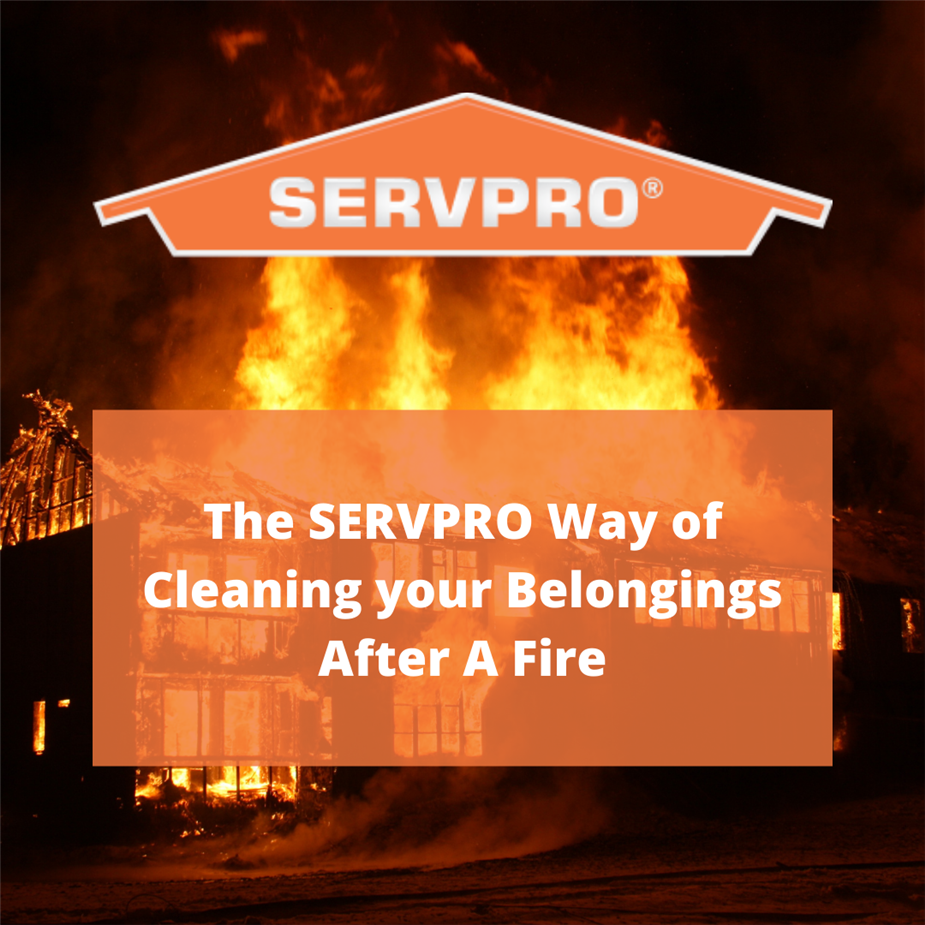 The SERVPRO Way of Cleaning your Belongings After A Fire
The SERVPRO Way of Cleaning your Belongings After A Fire
The last thing you or your family wants to worry about after a devastating house fire is cleaning your belongings and treasures. Not only is this a hassle, but it can actually be quite dangerous. That is why you should leave it to the professionals at SERVPRO. Here is a list of ways that we clean your belongings and restore them:
- Dry Cleaning - Used for cleaning light residues or to pre-clean prior to wet cleaning.
- Wet Cleaning - An effective cleaning method for removing moderate to heavy residues.
- Spray and Wipe -Effective for items that can’t withstand wet cleaning.
- Foam Cleaning - Used for upholstery fabrics that might shrink or bleed if wet cleaned.
- Abrasive Cleaning - Involves agitation of the surface being cleaned.
- Immersion Cleaning - Contents are dipped into a bath of the cleaning product.
We also provide move-out and pack-up services so you can stay somewhere safe while we do the dirty work! Once the restoration is complete, we will move all your freshly cleaned items back in.
Five Tips for Getting Rid of the Smoke Smell in your Home
11/1/2021 (Permalink)
If you’ve had a fire in your home recently, the smell of smoke may still haunt you even if you’ve had the damage repaired. Not only is the smell of smoke unpleasant, but it can also be a harsh reminder of the fiery event that took place in your home. Here are five tips to get that smell out of your house for good!
- Air out the house. Open every single door and window in your house that you can and turn on every fan you own. Place the fans strategically throughout your house, pointing them in corners or towards doorways and windows. This will help “push” the smell out of the house.
- Clean! All clothes, towels, bedsheets, curtains, rugs, blankets, and other fabric materials in your home should be washed-- even furniture needs to be cleaned. Wash your windows, screens, and blinds, as well as all solid surfaces with dish soap, white vinegar, and warm water.
- Deep clean the carpet. Get your hands on a carpet cleaner and shampoo your carpets-- carpet holds smoke!
- Clean out the HVAC system. Smoke can stay stuck in the ductwork in your home and continue to circulate smokey-smelling air throughout your home.
- Repaint your walls. Paint can also retain smoke odor, so if you follow the previous tips and still smell smoke, it may be time for a paint job! Latex paint is best for preventing odor retention.
Of course, if you still notice the smell after following these tips, give us a call and let the professionals handle it-- we’re happy to help!
What to Do in the Event of a Grease Fire
9/5/2021 (Permalink)
A fire happening whether it’s in your home or a building you’re in is likely a thought that has crossed your mind.
Although there is the fire department to call to help deal with a fire, it is also important that you take steps and precautions to prevent them yourself. A lot less damage could take place if you have fire prevention tools to use while waiting for the fire department to show up.
A common kitchen fire that you may not know how to prevent is a grease fire. These are the steps to take to prevent the spread of a grease fire:
How to prevent the spread
-Cover the fire with a metal lid and leave the cover on until it has cooled.
-Turn the heat source off.
-Pour baking soda or salt on it to smother the fire if possible.
You have to be careful to use either baking soda or salt if you decide to smother the fire. This is because other cooking powders have different chemicals that don’t react the same as baking soda or salt. If you use a different powder it has the chance of making the fire worse.
What not to do
-Do not try to move the pot/pan outside of the building.
-Do not try to pour water over it to extinguish the fire.
If you attempt either of these it can either cause you to get injured or make the fire worse.
Trying to move the pot/pan outside can end up giving you really bad burns or even lead to a fire outside of the building. Be sure to keep in mind the right methods if you ever find yourself in this situation.
What to do if you can’t stop the fire
-Get out of the home or building you are in. It is most important that you, including others, get out of the building safely. This is why it is a top priority to avoid injury and possible loss.
-Call 911. Be sure you are a reasonable distance from the fire to ensure you are safe before calling.
-Stay out and far from home/building until the fire has been contained and handled by firefighters.
Ways to prevent grease fires
-Don’t leave food being cooked in grease unattended.
-Keep flammable items far from the stovetop.
-Heat the oil slowly to the recommended temperature.
-Add food into oil/grease gently to avoid any splatter.
Knowing fire prevention methods is very important just in case you ever find yourself in a situation where there is a fire. Knowing ways to slow or stop a fire can help lessen damage from happening in your home.
Here at SERVPRO, we want to help you restore your home and offer services for fire damage repair and restoration. No one ever expects a fire to happen so try and be prepared for the unexpected.
How to Create an Evacuation Plan in Case of a Fire
9/5/2021 (Permalink)
Evacuation plans are a necessity, regardless of whether you are at home or in a business. Having one in place could save lives and prevent unnecessary injury to those involved in the situation.
Here are some tips on making a custom evacuation plan to best fit your needs as well as those around you.
Plan for everyone.
Don’t just think for yourself, the plan needs to benefit everyone and accommodate any special circumstances. Children may need extra planning as situations like this may be hard for them to understand.
Find two ways out.
Make sure you are not limited to one exit, ensuring multiple exits gives you a better chance of escaping to safety.
Involve children in planning.
Consider having your children help create a fire evacuation plan2. Draw a map of the home and have children mark two exit routes and the locations of smoke detectors.
Choose a meeting spot.
Decide on a meeting place outside, such as a neighbor’s house, mailbox or stop sign. It should be in the front of the house so emergency responders can see you when they arrive. Agree not to go back into the house after you leave.
Check smoke alarms.
Check that smoke detectors are properly placed and working. The National Fire Protection Association recommends installing them in every sleeping room, outside each sleeping room and on every level of the home.3
Be visible.
Make sure that your house number can be seen quickly from the street by emergency responders.
Respond quickly.
Make sure everyone knows that if the smoke alarm sounds, he or she needs to get out immediately.
Have a backup plan.
If the planned exit routes are blocked and it’s not possible to leave the house, close all doors between you and the fire. Place a towel under the door and go to an exterior-facing window. Call the fire department to report your location.
Share with everyone.
Go over the plan with everyone who lives in the house and with visitors and overnight guests.
Practice regularly.
Practice and review the plan regularly (at least once a year).
Summer Grilling Safety Tips
7/8/2021 (Permalink)
Summer weather means grilling season is in full swing! Although grilling may be something you are a pro at, it is important to make sure you refresh your safety protocols.
Grill Outdoors
It is essential that you are grilling outdoors. This will help prevent fires as well as prevent smoke and other harmful gasses from being released in your home.
Stabilize the Grill
Before you start up your grill, you need to make sure that the base is sturdy. This will prevent the grill from tipping over and potentially start a fire.
Clean Your Grill
Build-up occurs as a residue from the food you grill. Over time, this build-up may cause a grill fire. Prevent this by scraping your grill regularly.
Check Your Surroundings
Normally there is a lot going on while grilling. Make sure you keep an eye on your kids, friends, and activities around you. The best way to stop accidents is to prevent them.
Avoid Loose Clothing
Since you will be standing near a fire, it is important to make sure your clothes are not draped over the grill. Check that all loose sleeves, aprons, and even your hair is out of your way.
Grilling is always a fun summer activity, but also make sure it is a safe activity. If anything does go wrong, call SERVPRO, faster to any disaster.
Backyard Bonfires & Fire Safety
3/1/2021 (Permalink)
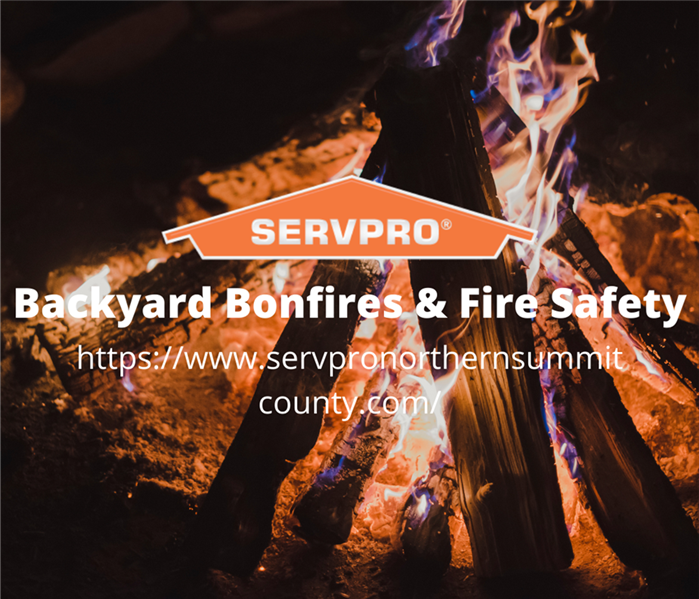 Stay safe when the warm weather backyard activities commence.
Stay safe when the warm weather backyard activities commence.
You have the perfect s’more in your hand, toasted golden brown marshmallow on 2 perfect squares of graham cracker, and chocolate on top and bottom. You can hear your uncle’s voice, telling his favorite ghost story for the umpteenth time. Raw throat from the top of your lungs rendition of Kumbaya. Life doesn’t get much better than sitting around a bonfire with your friends and family on a cool fall evening. However, if you do not follow safety precautions the best night ever could become the worst with no warning.
Before the Fire
- Only build fire in enclosed, contained areas.
- Clear the area around the pit of dry paper, grass, leaves, or pine needles
- Make sure the pit is on a flat surface in an open area, away from any trees and the home
- Move furniture away from the fire pit
- Keep flammable materials away from the fire pit
- Check wind direction and be prepared to make any adjustments
During the Fire
- NEVER leave a fire unattended
- NEVER use garden waste or trash in a fire
- NEVER leave children unattended
- Keep your distance, sparks can fly unexpectedly
- ALWAYS keep a fire extinguisher or hose nearby
When the night is coming to a close, you must put the fire out completely before leaving the area. To do this you will want to douse the fire with water. Once the flames are extinguished use more water and stir with a stick or shovel to confirm all ashes, wood, and sparks have been successfully put out. Be sure to store any flammable items safely and away from children.
A backyard bonfire is one of the best ways to enjoy a warm or even cool night with friends and family. If you follow these safety tips, your only worry will be running out of marshmallows. Remember fire is dangerous, but handled with care and safety enjoying a night by the fire should remain a timeless tradition.
Warning Signs of Dangerous Outdated Wiring
2/26/2021 (Permalink)
Before bed each night and maybe even multiple times throughout the day, you plug in your phone to charge. You may have a watch, headphones, tablet, laptop, or any other electronic charging right alongside it. In today’s world with all the technological advancements your home is required to supply power to so many more devices than ever before. There is not much thought given to what goes on behind the walls as long as the light switch turns the light on and the charger works as it should, but old or damaged wiring can cause big problems. Overloading an older home's wiring can start a fire.
Home electrical fires account for an estimated 51,000 fires each year, nearly than 500 deaths, more than 1,400 injuries, and $1.3 billion in property damage. Many of these fires can be prevented if you know how to recognize and address common warning signs.
- Frequent Circuit Breaker Trips - It is common for your circuit breaker to trip on occasion, that is what they are designed to do. In most cases, you will be able to flip the switch and continue going as usual. However, if the circuit breaker begins tripping multiple times a month or more it’s a sign of a deeper more serious problem.
- Flickering, Buzzing, or Dimming Lights - If any of these things happen when you plug in or use multiple appliances this is a sure sign you are needing a professional upgrade.
- Frayed or Chewed Wiring - Wires can fray or crack from age, heat, corrosion, or bending. They can also be nicked, pinched, or pierced by nails or screws. Damaged wires are dangerous and should be replaced by a pro. Rodents will also chew through wiring.
- Discolored, Scorching, or Smoking Outlets - Keep an eye open at the outlet points in your home. If you notice any discoloration or scorch marks on your outlets, that is a sign that the wiring in your home has been damaged in some way and is releasing heat. That heat is already damaging your home and has the potential to do much worse if left unchecked.
- Warm or Vibrating Outlets - Another way to find out if the wiring in your home has gone bad is to check by feel. Without touching any wiring directly, feel your home’s electrical outlets for heat or vibrations. In the case of either, have an electrician check for and replace any loose or damaged wiring.
Working with electricity is best left to the professionals, as it can be dangerous when not handled properly. Even with taking all necessary problems, disaster can still strike. If it does, SERVPRO is here to help. With over 50 years of fire restoration experience, the technicians at SERVPRO will make dealing with the results of a house fire as easy and manageable as possible.
Fire Retardant Fabrics
2/5/2021 (Permalink)
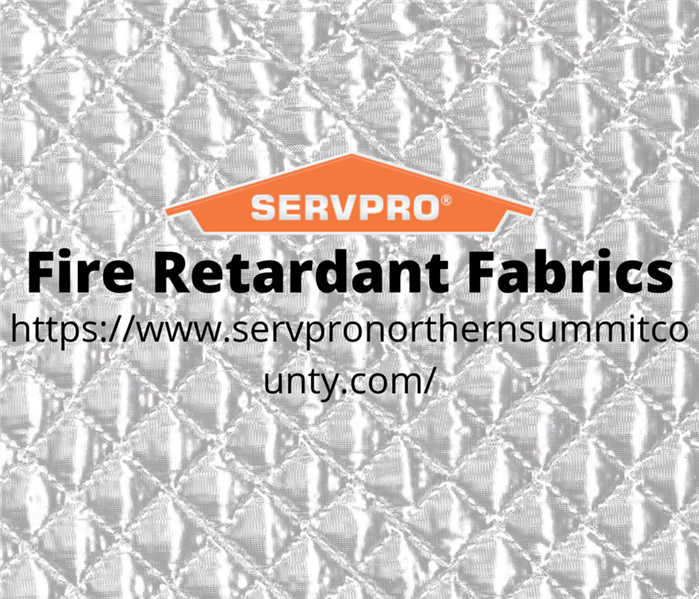 Knowing which fabrics are fire retardant to better protect you and your home.
Knowing which fabrics are fire retardant to better protect you and your home.
FABRICS are all around us, adding warmth, texture, color, and much more to our surroundings, whether curtains, drapes, furniture upholstery, carpets, and even the clothes we wear.
But fabrics can also burn easily and in today’s world we want to protect our homes, businesses, property – and the people we love – from unnecessary risk if the worst does happen and a fire breaks out.
Luckily, there are many types of fabrics out there and each has its own unique properties, many of which are actually surprisingly resistant to fire.
And for those that are more flammable, an increasing range of products exists to improve their abilities to resist fire.
Fabrics are assessed on their fire retardancy based on how long it takes the fabric to burn and at what temperature this takes place. Fabrics are assessed in labs and tested with different types of fire starter such as a gas burner, a smoldering cigarette, or a match, and rated on internationally agreed standards.
Some natural fibers are among the best at being flame-retardant – wool is the hardiest of natural fibers, being particularly hard to catch the light, and often self-extinguishes smaller flames. Silk, perhaps surprisingly, is also a very slow burner and hard to light.
Of man-made fibers, acrylic, polyester, and nylon all have high melting points – higher than many natural fibers – and are considered fire retardant.
For fabrics that are not as naturally retardant, there are two main methods to make them tougher against fire – coating and dipping.
The coating is a method where a fire-retardant back coating is applied to the fabric. This is best for upholstery as it makes the fabric stiffer – good for furniture less so for curtains.
Dipping is when the fabric is given a chemical bath, with the solution filling in space between fibers and making the finished product more resistant to fire – when exposed to heat the chemicals activate and trigger a reaction that suppresses the flame.
SERVPRO of Northern Summit County is your trusted fire safety advisor and here to help with any emergency clean up or restoration.
Fire Safety is Still Important in the Winter
2/4/2021 (Permalink)
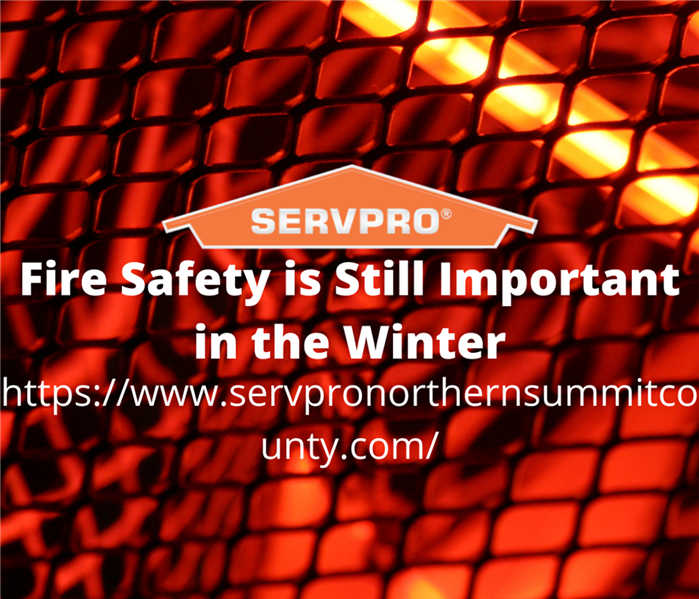 Fire damage can be just as dangerous, if not more, in the wintertime.
Fire damage can be just as dangerous, if not more, in the wintertime.
It’s the type of weather where you can see your breath, your fingertips resemble literal ice cubes, and you need at least 3 layers to leave the house comfortably. During the winter, as the temperature drops outside people tend to bring the heat inside. There are blazing fireplaces, space heaters, candles lit, and oven cooked comfort food all to keep you cozy and warm. Unfortunately, these can also present fire hazards if not managed properly. Keep your family both warm and safe with these winter fire safety tips.
Candles:
- Be sure to keep candles at least 12 inches away from anything flammable.
- Blow out candles when you leave the room
- Do not leave children or pets unattended with the lit candle
- Don’t fall asleep with lit candles
Space Heaters
- Keep anything flammable at least 3 feet away from the space heater
- Children and pets should also be at least 3 feet away from a space heater
- Ensure Space Heater has an automatic shut off switch
- Turn off the space heater when going to bed or leaving the room or house
Fire Places
- Make sure the damper is open before lighting the fireplace.
- Don't close the damper until all ashes are completely cooled.
- Keep the screen closed while the fireplace is lit.
- Always put the fire out before going to bed or leaving your home.
- Keep any flammable objects far away from the fireplace.
On top of these fire hazards specific to the winter months, it is important to be aware and practice basic fire safety measures that should be followed year-round. Have a smoke detector on every level of your home, test the batteries monthly and replace them when needed, and always have a plan in case of a fire that you and your family know well. Be sure to always have a working fire extinguisher that has been properly maintained and inspected, and know how to use it. At SERVPRO we know how important it is to keep your family safe and we can help you ensure you are doing what you can to prevent a house fire. If an emergency does happen, we are also here to restore your damaged house to the home it was before.
Fireproofing Important Documents and Valuables
1/4/2021 (Permalink)
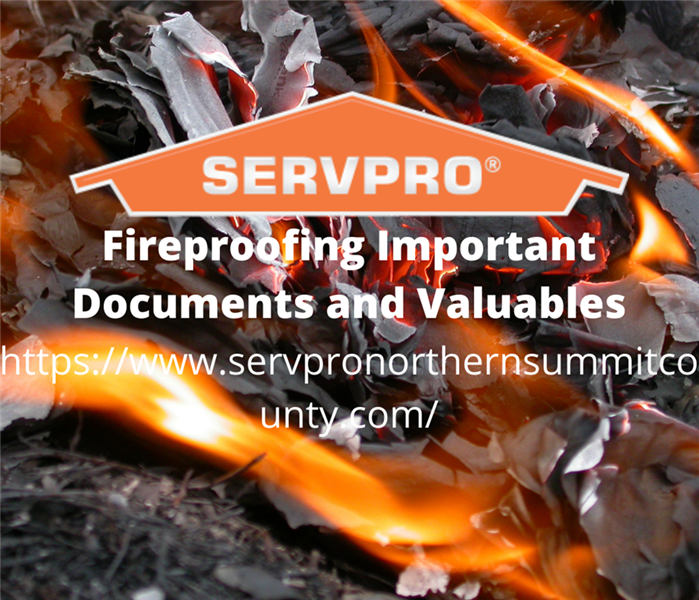 Prevent irreversible damage to your important documents.
Prevent irreversible damage to your important documents.
HOUSES do not burn down often – but when they do the impact can be devastating.
Even assuming everyone is safe and sound, the task of rebuilding can be overwhelming – especially if all your key information was also lost in the fire.
Insurance information, birth certificates, passports, property deeds – they can be retrieved and reestablished but not without extensive time, research, and costs. And any sentimental archives would probably be lost forever.
But with a little bit of preparation, you can minimize this risk for very little cost and effort, giving yourself a much better springboard to rebuild as quickly as possible should the worst happen.
Fireproofing your essential documents and valuables is a surprisingly simple process. In today’s world, many documents are electronic to start with, and can be stored in any number of cloud platforms – and a quick picture of any other essential paper documents can simply be uploaded for safety too, and accessed anywhere should you need to. Do make sure the digital location and password are known by those key family members that may need it, or the information will exist but be lost.
For physical documents, fire bags or a small fireproof safe are ideal and not expensive. The bags come in various sizes and can hold up to 500 sheets of paper, or small valuables, and are resistant to temperatures up to 2,500F.
A fireproof safe can also be bought for very little at any superstore or office supply store, and again come in a range of sizes. Not only can you keep important documents under lock and key, but should a fire break out, they will be in a good place to survive the flames. They are also much more convenient than paying for a deposit box at a bank.
For larger quantities of documents that may not be quite as vital, there are chemical flame retardants that can be sprayed on paper and cardboard storage boxes cheaply and quickly. They will not hold up as well as a safe but will help keep flames at bay as the chemicals provide a char resistant layer of protection and buy vital time for fire crews to do their work. There are also homemade solutions that will make your paper harder to catch light by soaking your documents in Borax solution or coating them in wax. Again, neither will be fireproof but both will make it harder for the paper to actually catch alight.
For a professional opinion on fireproofing, and for an efficient cleanup should a fire affect your home or business, call SERVPRO today.
Preventing Kitchen Fires at Your Holiday Dinner
11/19/2020 (Permalink)
The holidays are a great time of year but cooking in the kitchen can get dangerous fast. It’s important to exercise safety and caution at all times in the kitchen in order to prevent the common kitchen fire. The majority of house fires actually start in the kitchen. Make sure you and your family are taking these precautions this year.
Watch What You’re Cooking
Leaving hot pots and pans unattended is a recipe for disaster. Even if you are just leaving the kitchen for a second, make sure you’re turning the stove off
Keep Your Area Clear
Make sure your preparation and cooking areas stay clear of any stray towels, bags, boxes, and drapery. Keep children and animals out of the kitchen to minimize the risk of accidental bumps and shakes.
Avoid Loose Clothing
Make sure your shirt and sleeves are clinging to your body and not draping over the oven or stovetop. Clothing fabric can easily catch fire.
See Smoke? Turn it Off
If your stove or oven starts to smoke, turn it off and cover it. Remove pans from burners and keep the oven closed until the smoking ceases.
Always Have a Backup
Keep a pan lid or a cookie sheet nearby. Use it to cover the pan if it catches on fire; this can be used put out the fire. Leave the pan covered until it is completely cooled and no longer smoking.
If a fire does break out, make sure you have an evacuation plan in place so that you and your guests can get out safely. SERVPRO is on standby for any of your fire damage needs.
Avoiding Electrical Fires in Your Northern Summit County Home
9/28/2020 (Permalink)
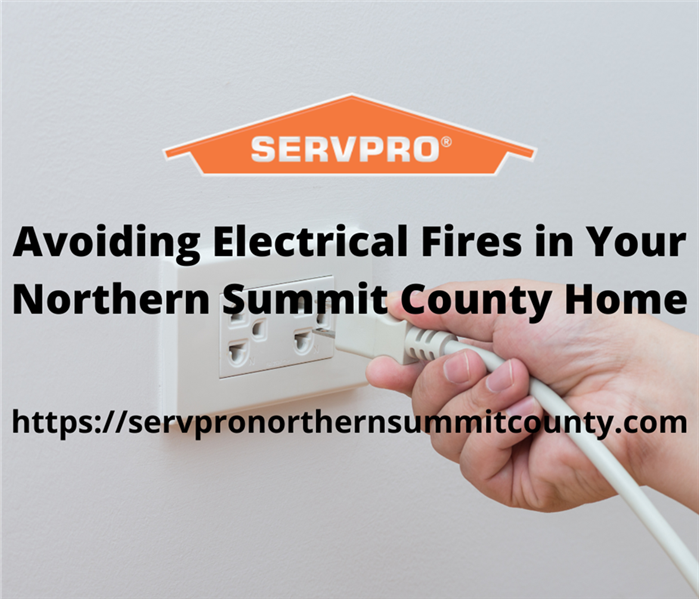 Make sure that your home is safe by checking your electronics.
Make sure that your home is safe by checking your electronics.
ELECTRICITY is essential to the modern home and we rarely think twice about it when we flick a switch.
But with our homes having ever more machines, devices and equipment hooked up to the main supply – many running 24/7 – we cannot afford to be too cavalier in our approach to electricity, as if things are not running properly a fire can soon break out.
Check electrical outlets for loose-fitting plugs or exposed wires, never force plugs into outlets or remove the third grounding pin to make it fit a two-prong socket, and do not overload outlets with adapters.
Cords should not be frayed or cracked or hidden under carpets or rugs, and do not nail or staple them into place. Extension cords are designed for temporary use only, not permanent fixtures.
Light bulbs should be the correct wattage for the fixture’s design – do not put higher watt bulbs in as they can overheat – or replace with low power LED bulbs. Make sure they are screwed in tightly.
And wherever possible install Ground Fault Circuit Interrupters – GFCIs – especially anywhere water could be present, such as kitchens, bathrooms, laundry, workshop, garage, basement, and outside.
Check fuses are the right rating for what they are doing and check circuit breakers are working. Check wiring regularly for defects – loose wires or fixtures are common flashpoints for fires and popping or sizzling sounds in walls are a warning sign.
And if appliances start to act up, regularly blowing fuses or tripping breakers, it is a sign something is wrong – unplug immediately and get it checked or replaced.
But if the worst does happen and a fire starts in your home, SERVPRO of Northern Summit County is on standby 24/7 to clean up and repair your home.
Protect Your Home From Disaster with Good Grill Safety
9/18/2020 (Permalink)
 Everyone enjoys grilling, but make sure to protect yourself with good safety practices.
Everyone enjoys grilling, but make sure to protect yourself with good safety practices.
We love our barbecues, cookouts, and grills – summer and fall just would not be the same without the smell of someone nearby grilling up a tasty meal.
But a grill can be a potential disaster waiting to happen if you do not take the time and trouble to look after it and its surroundings – grillmasters can get a little complacent which can end in a fiery disaster.
It may seem obvious, but your grill is literally a fire, whether gas-powered or traditional charcoal and they can soon move from controlled to uncontrolled.
Start by keeping your barbecue well away from your home – at least 10 feet or more if possible. Fire can and does spread rapidly.
Keep your grill clean – many of us get a bit lazy in a way we would never tolerate in our kitchens, and fat can soon build up, creating a reservoir of fuel and the opportunity for sudden flare-ups.
Check for gas leaks – is your piping old and worn, are seals cracked, are connectors as tight as they should be?
Always make sure your barbecue lid is open before you turn the gas on – or you are creating an explosion in the waiting.
Do not overload the grill with food – all that dripping fat is literally fuel to the fire and flare-ups become much more likely.
Here at SERVPRO of Northern Summit County, we want you to enjoy a good grill out safely – but if the worst does happen we will be there to get your house back in shape and back to being your home.
Summer Fire Safety Tips in Northern Summit County
7/17/2020 (Permalink)
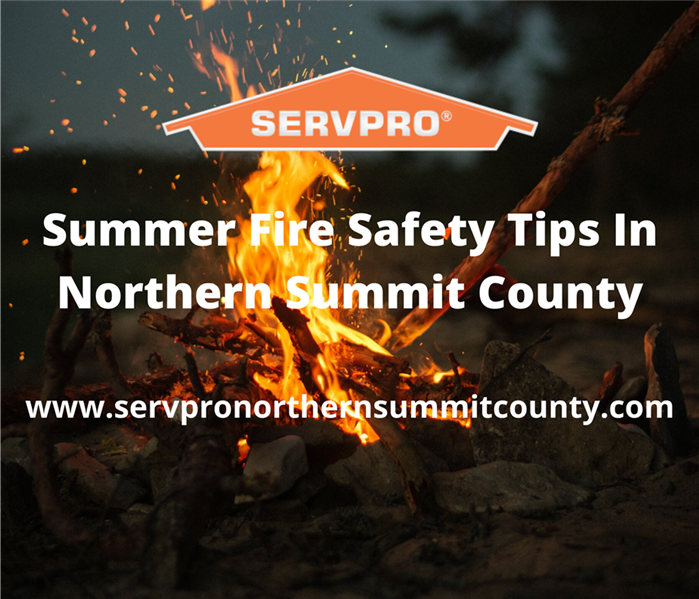 Enjoy all the activities you enjoy this summer, but stay safe!
Enjoy all the activities you enjoy this summer, but stay safe!
Summer is in full swing in Northeast Ohio and that means people are spending more time soaking up the sun and enjoying the outdoors – or maybe that they’re sitting inside loving the air conditioning. Either way, people are enjoying those good summertime feelings, well-deserved after another long, cold NEO winter. Don’t let a summer fire come along and ruin that warm-weather positivity. It’s true that house fires are less common in the summer than in the winter, but there are some precautions you can take to avoid a disaster at your home.
- Grilling: For many people, grill out is a major perk of warm weather. Cooking your food over an open flame just gives it that smokey, delicious quality you can’t get on the stove or in the oven. It’s important, however, to make sure you take some simple precautions like checking the propane hose and tank for leaks before turning your grill on after a period of disuse. Additionally, you always want to make sure that you keep your grill a safe distance of at least three feet away from your home and out from under any overhangs. One of the most common causes of grill fires is a failure to clean the grill, leading to internal fires that could quickly get out of control. Clean your grill after every use to remove grease and leftover particles.
- Bonfires: Even though it’s warm outside, a favorite summertime activity for many people is sitting around a backyard bonfire. Bonfires are also a common way for people to eliminate yard waste that they have lying around. Make sure that fires are at least five times the height of the fire in distance away from any surrounding structures. Never burn aerosols, canisters, or anything containing foam or paint as they could explode, and the fumes can be toxic. When putting out a bonfire, make sure that you rake and turn the coals while dousing them with water to ensure that the fire is completely out.
- Air conditioners: Another common cause of summer fires is air conditioner malfunction. Of course, it is wonderful to be able to go into a nice cool home after an afternoon spent in the oppressive summer heat but it’s important to make sure that your AC is properly maintained to avoid any issues. Window units especially tend to be the major culprits for fire starters, as they sometimes overload electrical outlets or have internal faults that cause problems. Don’t leave your window AC unit running for too long without breaks or when you are not around. Additionally, if you have central air, you are at much lower risk for air conditioner fires but having your system periodically inspected, every few years, to ensure it is still in good working condition could save you from disaster later on.
If a fire does happen in your home this summer, know that you can call on SERVPRO of Northern Summit County to come to the rescue. We are faster to any disaster and our highly trained technicians can remove all evidence of fire from your space, including smoke damage. Call us when disaster strikes.
How to Keep Safe During a House Fire.
2/5/2020 (Permalink)
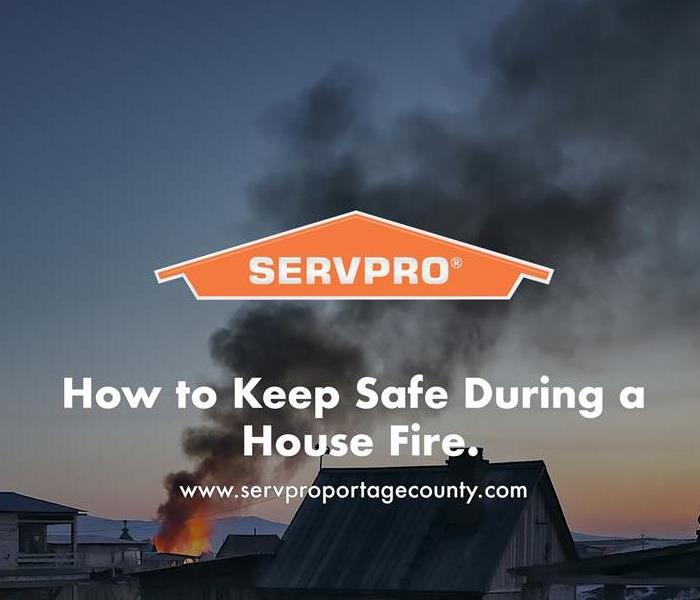 We know how devastating a fire disaster can be, but we are here to help!
We know how devastating a fire disaster can be, but we are here to help!
A small flame can turn into a major fire within seconds. It takes minutes for smoke to fill a house. You may not think you will ever be a victim to a house fire, but it's better to be prepared and know what to do should it ever happen.
Keeping safe in your house during a fire:
- If you hear your smoke detector or see fire, exit your home as quickly and safely as possible; do not stop to grab your belongings.
- Get low to the floor and crawl on your hands and knees to evade the toxic smoke.
- Immediately stop what you're doing and drop flat to the ground and roll around until you smother the fire.
- Close the door and cover all vents and cracks with a cloth to keep the smoke out.
- If you are trapped in a second story room get yourself to an area where people will be able to hear or see you.
- If you must go out a window, look for a ledge you can get yourself onto and hang down from your hands.
- Make sure everyone is accounted for; if anybody is missing, only re-enter the building if it is safe to do so.
- Keep a safe distance between you and the fire.
Always call 9-1-1 at any sign of a fire and think for your safety first before acting.
We know how devastating a fire disaster can be, but we are here to help! Call SERVPRO of Portage County (330) 677-4483 to help get your home restored efficiently.
How to Keep Safe During a House Fire
2/4/2020 (Permalink)
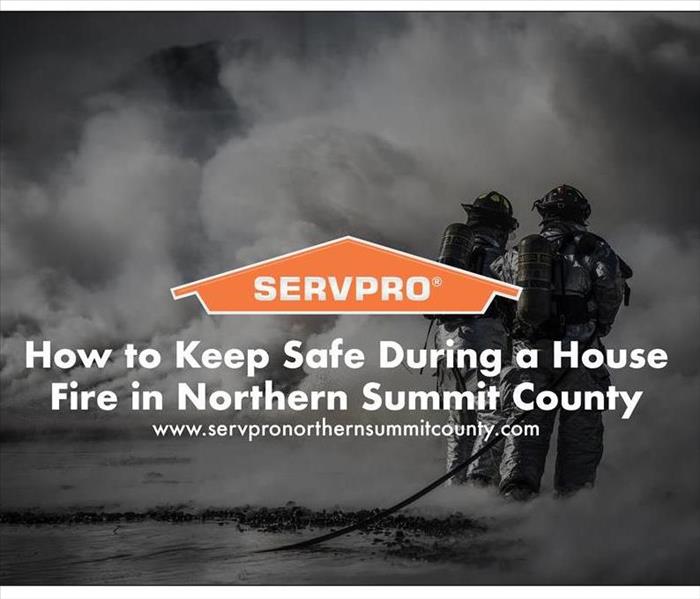 SERVPRO of Northern Summit County has the expertise and the resources to handle your home fire.
SERVPRO of Northern Summit County has the expertise and the resources to handle your home fire.
You may think you'll never be a victim of a home fire, but it's better to be prepared and understand a few tips:
Keeping safe in your house during a fire:
- React as soon as you hear your smoke alarm go off. Leave your house at the sound of an alarm and call 9-1-1 immediately. Do not stop to grab your belongings.
- Know when to Safely exit through doors. If you see smoke under the door, do not open the door to escape. If you do not see smoke, put the back of your hand to the door if it is cool, open slowly and pass through.
- Prevent yourself from smoke inhalation by Getting low to the floor and crawl on your hands and knees. If you have to walk through the smoke, cover your nose and mouth with a shirt.
- Stop drop and roll if your clothes catch fire. Immediately stop what you're doing, drop flat on to the ground and roll around. Make sure to cover your face with your hands as you're rolling to protect yourself.
- Call for help from a second story window. If you are trapped in a second story room get yourself to an area where people will be able to hear or see you.
- Escape from a second story window if you can. If you have an escape ladder, toss it down the side of the house. If you must go out the window, look for a ledge you can get yourself onto and hang down from your hands.
It is important to know what to do should a fire arise in your home, you need to act quickly and be careful. Always call 9-1-1 first and get to safety.
SERVPRO of Northern Summit County has the expertise and the resources to handle your home fire. If you need assistance call (330) 650-4486
Portable Generators Can Cause Fire Damage in Northern Summit County.
1/1/2020 (Permalink)
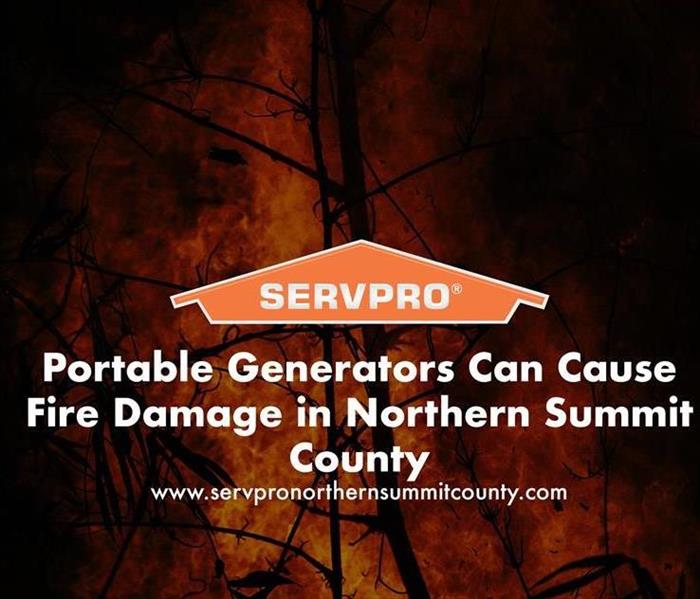 SERVPRO of Northern Summit County has the expertise and the resources to handle your fire disaster and restoration.
SERVPRO of Northern Summit County has the expertise and the resources to handle your fire disaster and restoration.
The winter months are cold in Northern Summit County, and can cause power outages or the need for additional warmth. Portable generators can be useful during winter storms. However, if you are not careful, they can cause fire disasters and many other issues.
Here are some tips if you plan on using Portable generators this season:
- Use portable generators outdoors in well-ventilated areas
- Keep portable generators away from all doors, windows and vents
- Have carbon monoxide alarms in your home
- Do not use a generator in a wet area
- Connect appliances to the generator with heavy-duty extension cords
- Do not fuel your generator when it is running
Underwriters Laboratories (UL) in conjunction with U.S. Fire Administration, National Fire Protection Association and Consumer Product Safety Commission recommend the following safety tips in preventing loss of life and property when operating portable generators:
- Follow manufacturer’s instructions.
- Never use generators in the house, garage, crawl spaces or other enclosed areas.
- When a CO alarm sounds, it is a warning to occupants that poisonous gases may be in your home.
- Test CO alarms frequently and replace batteries as needed.
- Use UL listed/marked outdoor extension cords to connect to the generator.
- Keep children and pets away from the generator and fuel.
SERVPRO of Northern Summit County has the expertise and the resources to handle your fire disaster and restoration. If you need assistance call (330) 650-4486
Fire Safety Tips For Homes in Northern Summit County
12/2/2019 (Permalink)
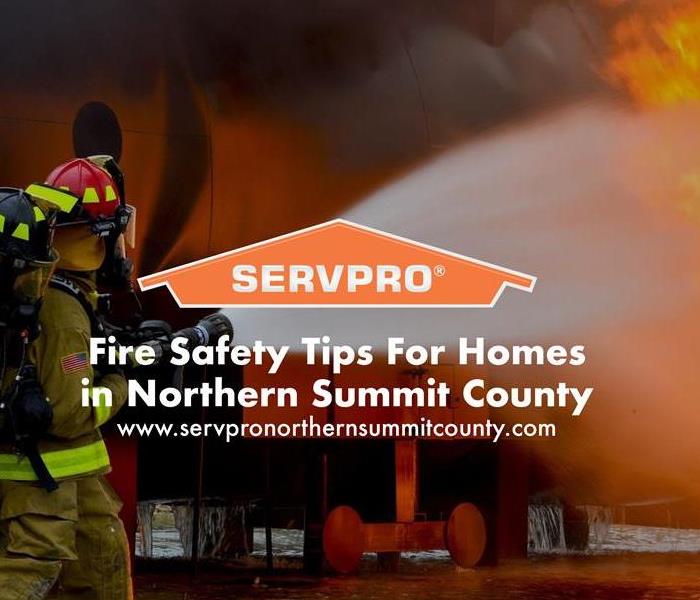 There are things to be cautious of to prevent a fire. However, should your home ever face a disaster call SERVPRO of Northern Summit County.
There are things to be cautious of to prevent a fire. However, should your home ever face a disaster call SERVPRO of Northern Summit County.
It is important to be safe when using electrical appliances, extension cords, light bulbs and other equipment in your home. It only takes one mistake to spark an electrical fire, but simple prevention measures can be effective solutions.
These safety tips can help keep all appliances operating safely and help you prevent unexpected fires in the home:
- Ensure any appliances you purchase are approved by Underwriters Laboratories (UL).
- Unplug unused appliances and store cords safely out of reach of young children.
- Appliances that generate heat should be given several inches of clearance all around for good air circulation and cooling.
- Do not attempt amateur repairs or upgrades.
- Keep all electric appliances away from water: sinks, bathtubs, pools or overhead vents.
- Do not operate any electrical appliance with wet hands.
- Keep clothes and curtains away from radiators, space heaters, heating vents and other heat sources.
There are so many more things to be cautious of to prevent a fire. However, should your home ever face a disaster call SERVPRO of Northern Summit County.
SERVPRO of Northern Summit County has the expertise and the resources to handle any size disaster. If you need assistance with storm or flooding call (330) 650-4486
The Top 10 Causes of Fire in Northern Summit County
11/4/2019 (Permalink)
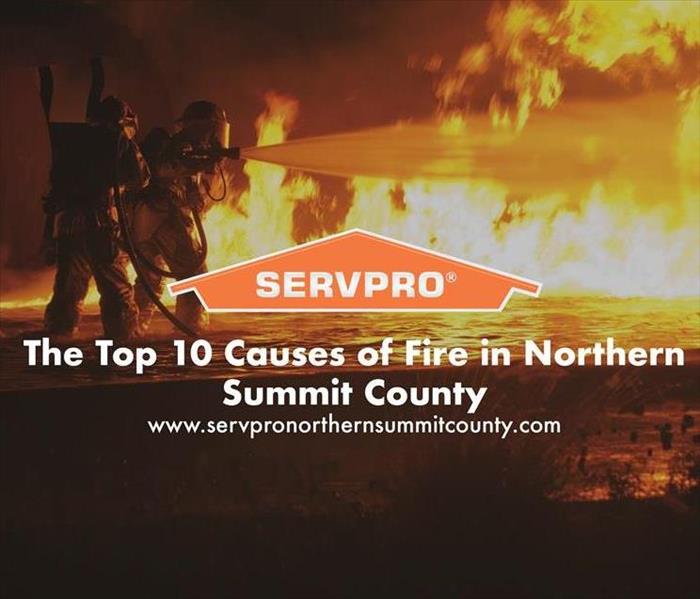 SERVPRO of Northern Summit County has the expertise and the resources to handle any size disaster. If you need assistance call (330) 650-4486
SERVPRO of Northern Summit County has the expertise and the resources to handle any size disaster. If you need assistance call (330) 650-4486
According to the National Fire Protection Association, an estimated 374,000 U.S. homes catch fire annually. The cumulative damage is jaw-dropping. The price tag: Almost $8 billion annually.
The key to home fire prevention is knowing the most common causes. Working smoke detectors in the kitchen and on every floor are a must for every American home.
Here are the top 10 causes of fires:
- Cooking: All it takes is an unsupervised oven; never leave a stove unattended, maintain a three-foot buffer between you and a hot stove. Make sure to keep a working fire extinguisher in the kitchen.
- Kids Playing with Fire: Kids are naturally curious about fire. Parents should ensure young children don’t have access to matches, lighters and easily flammable liquids and materials.
- Smoking: Some might fall asleep in their chair while smoking and may wake up seeing your living room in flames. An unattended burning cigarette in an ash tray or a just a few fallen ashes on carpet can ignite a serious blaze in your home.
- Heating: Space heaters are extremely flammable and can easy overload. Keep them away from furniture and appliances.
- Electrical: An overloaded circuit board, or even a power cord or faulty extension cord, can have your home smoking in short time. Be aware of the amount of watts you are plugging in to any extension cord.
- Candles: These are a practical and cheap mean of light and nothing sets the mood for a romantic or intimate dinner. Always ensure all candles are blown out before leaving the room or house or going to sleep.
- Fireplace: Fireplaces can turn from trusted heating sources to ground zero of a house fire. Unattended fires are the main cause of fireplace-centered house fires.
- Dryers: Dryers are loaded with debris, are highly flammable and can lead to fires.
Improper dryer vents and venting can lead to dryer-related fires. Remove the lint screen after every use. - Flammable Products: Be sure all gasoline and oil used for lawn mowers and snowblowers are capped and kept away from other potential fire sources. Make sure all trash reciprocals are firmly covered and stored away from your home.
- Christmas Trees: Dry Christmas trees wrapped with lights and electrical cords are the greatest fire threat. When celebrating with a live Christmas tree, make sure it is well watered and leave the lights off when you are not home.
SERVPRO of Northern Summit County has the expertise and the resources to handle any size disaster. If you need assistance with storm or flooding call (330) 650-4486
Summit County family daily routine disrupted by dryer fire
9/10/2019 (Permalink)
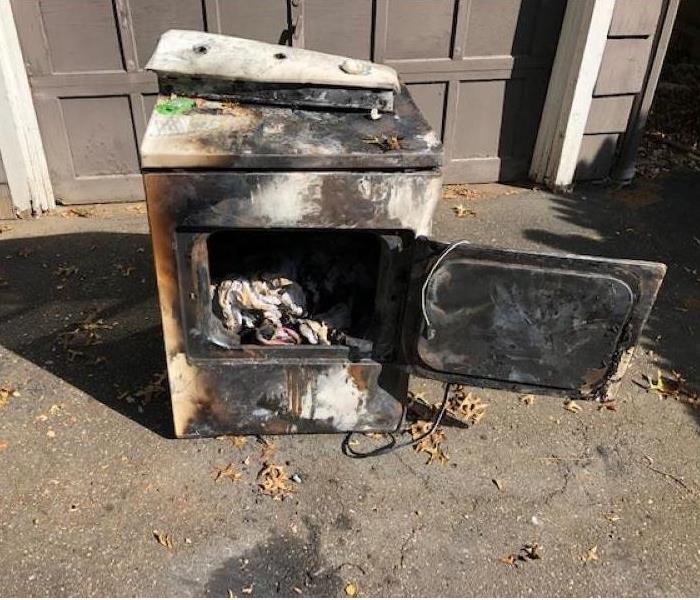 Dyer is the source for a fire in Summit County residence. An unattended dryer caught fire and caused fire damage to a family's home.
Dyer is the source for a fire in Summit County residence. An unattended dryer caught fire and caused fire damage to a family's home.
SERVPRO of Summit County received a request for fire damage restoration. Upon arrival to the family home, we met this dryer in the driveway. These driveway meetings are more common that you would imagine. The fire department will set the source appliance outside the residence to assist with removal of odor. Everyone is safe and sound, however these events can be very unsettling. How many times do you turn the dryer on and leave the house? We all do it.
The 2 easy things you can do to help prevent dryer fires: clean the lint screen, and make sure the exhaust is venting properly as well as clean and free of debris. Regular maintenance, using the correct plug as recommended by the manufacturer, and utilize the proper electrical outlet is also critical. Do not overload the dryer or dry towels with heavy grease or other flammable substance.
This family's home did not have structural damage however the entire home will require restorative cleaning – from top to bottom! Our service team has helped countless customers feel safe, cared for, and hopeful during the aftermath of a disaster. We are ready to help you as well. Day or night, our restoration experts respond immediately, we are faster to any disaster! Big or small, SERVPRO is there to help.
Our team at SERVPRO of Northern Summit County will get you taken care of.
Call Us Today – (330) 650-4486
Top Three Tips for Fire Safety in Northern Summit County
6/18/2019 (Permalink)
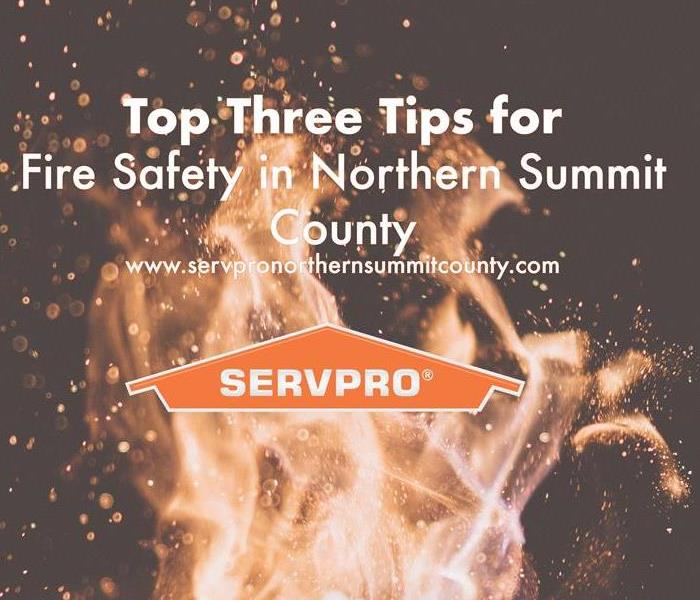 For any fire damage repair or restoration needs, call SERVPRO of Northern Summit County at (330) 650-4486.
For any fire damage repair or restoration needs, call SERVPRO of Northern Summit County at (330) 650-4486.
Fires escalate quickly. Having an escape route practiced (committing it to muscle memory) and working smoke alarms can be literal life savers. What else can you do for fire safety in your home?
Here are our top three tips for fire safety that can keep you and your loved ones as protected as possible.
- Every level of your home should have a smoke alarm installed. Place them inside bedrooms and outside sleeping areas, including the basement, in living rooms and/or near stairways for optimal use.
- Test and maintain smoke alarms regularly. Each month, you should check that they are in proper working condition. If they need new batteries, change them right away. Smoke detectors are critical components to alerting you in time to get out before a fire spreads too much.
- Twice a year, you should practice your fire escape plan with your family. Feel free to talk and plan the route together more than twice a year. However, at least two times every year will ensure it stays fresh in your mind if ever you should need to implement the steps.
BONUS TIP: Remember to never go back inside for anything at all. If you experience a fire in your home, GET OUT, STAY OUT, and CALL FOR HELP.
For any fire damage repair or restoration needs, call SERVPRO of Northern Summit County at (330) 650-4486. With us by your side, we’ll return your home to you “Like it never even happened."
Helping Property Owners Recover from a Fire-Damage Emergency
4/11/2019 (Permalink)
Dealing with a fire-damage emergency and the claims process is an emotionally trying time for a policyholder. A restoration professional must be sensitive to the personal and emotional aspects of a fire-damage situation. It’s imperative to recognize that a homeowner goes through five stages of grief: denial, anger, bargaining, depression and acceptance.
The professional must be prepared to respond appropriately to each situation. Insurance professionals need to prepare the homeowner for the restoration process, work closely with the restoration professional to ensure quality and timely work, and maintain a constant flow of communication throughout the process. A restoration professional must recognize that every loss is significant to the people impacted by it, and take the proper steps to restore the home to preloss condition.
Dealing With a Fire-Damage Emergency
A fire loss is often more severe than a water loss, and special attention to safety is imperative. The restoration professional needs to ask the property owner some simple questions to quickly evaluate the level of damage: “Is there any structural damage? Is there a lot of smoke?”
Air quality is the most important factor to evaluate. With any fire, carcinogens enter the air, and safeguards will need to be put in place to help ensure the safety of the air that the residents and workers breathe. All necessary PPE should be available for technicians, as well as the proper equipment to replace the bad air with fresh air as soon as possible.
If not already aware, the service professional should consider the ages and health of everyone in the home. Young children, the elderly and pregnant women might need to leave the property immediately, as they are often more susceptible to air-quality related health issues. If the client is not comfortable living in the home, the agent needs to assist in finding alternative accommodations for the residents.
Specifics to Consider When Scoping a Smoke and Soot Loss
There are several important steps to take when analyzing a fire-damage emergency:
- Evaluate how much heat was involved that resulted in damage to the structure, fixtures and contents. Look for a “heat line” on the wall, which often indicates possible damage to the structural integrity of the drywall materials.
- Where did the smoke/soot travel to? Did the smoke get into the HVAC system? Did the smoke travel into the attic areas, or force its way into the crawl space or basement?
- Consider pre-cleaning as an alternative process to save the metal and glass items in a home.
- Is there excessive smoke inside of the walls? This often requires removal of the drywall to get rid of the smoke/soot and accompanying odors.
- Determine which systems are available that will best deodorize the property and contents. These include professional cleaning and sanitizing; organic deodorizing systems; hydroxyls; and/or ozone.
- Determine the extent of the damage and the processes/procedures that will return the property, and the lives of those people involved, back to a “preloss” condition as quickly as possible.
- Respond as rapidly as possible to minimize the long-term effects of smoke and soot damage, and the many acids those materials contain.
Smoke and soot-related emergencies require specific mitigation strategies, depending on the materials affected: flat or glossy paint, finished and unfinished; laminates and solid wood items; particle-board materials; natural and man-made fibers in carpets and upholstered furniture. Porous, semi-porous and non-porous materials all require unique cleaning and deodorizing systems to most effectively deal with smoke/soot damage.
Wildfires often destroy thousands of acres of property and hundreds of homes. There is not much a mitigation company can do in those situations. However, there are often thousands of homes that are downwind from the fire that suffer smoke and soot damage, both on the exterior and the interior of homes. Smoke enters around doors and windows, through the ventilation system and even through the soffit vents into the attic areas.
Knowing how to deal with these materials quickly and professionally to neutralize and remove the compounds from the home, and to control and manage the odor damage are key aspects of a professional restoration/mitigation company.
Overall, the most important thing to understand about a fire damage emergency is that helping a client cope with the property loss is first priority. Communication along the way and hand-holding through the process is just as important, if not more, than the property owner receiving a check for the loss.
The restoration professional should be empathetic and emphasize that the damage will be taken care of, but never pass off the restoration process as a casual routine. The level of damage should be evaluated quickly and efficiently. It is critical to work with the insurance agent to educate the policyholder, ease their concerns, and manage their expectations.
Understand that each client will go through five steps of grief, and anticipate that anger will turn up one way or another. If the restoration professional expects this emotion to surface, they will be prepared to help the client cope and restore their sense of calm.
Ask Annissa: How Do I Handle Sensitive Documents Damaged in a Fire Loss?
4/2/2019 (Permalink)
Personal papers like bills, canceled checks, credit card statements and everyday magazines have no value in the eyes of the insurance company and they often don’t want to pay for them to be cleaned or deodorized. However, they often have value to the homeowner.
The biggest problem with this is that paper can hold a lot of odor and may re-contaminate the house once everything is unpacked. So first off, we check with the homeowner and see if the paperwork is something that they can live without. Or is it really important and needs to be kept? Once you explain that the papers can hold a lot of odor and may cause recontamination of the house and belongings, this will sometimes make the homeowner more aggressive about putting them in the round file.
If the paperwork cannot be parted with and must go on the “keep it list,” then we dust them off and organize them into a large 11x14 inch spec bag. This is a heavy duty plastic bag that keeps the odor and contamination contained until the homeowner can photo copy or reprint the documents they want to keep. The cost to the insurance company to handle them this way is really no more than their cost would be to throw them away, so this keeps your adjuster and homeowner happy.
This also allows the homeowner to go through the papers at their convenience as they are dealing with a lot of pressing decisions in the first few days after a fire. Having one less pressing thing to have to handle right away can be a huge relief for them.
NEVER... Walk Away from the Stove
1/3/2019 (Permalink)
Sporting Events and Television!
It happens, especially during sporting events…… you can hear the roar of excitement from the other room, and you know you are missing the big play of the game. So you leave the stove, just for a quick peek. Only it’s just never as quick as you anticipate. Meanwhile back in the kitchen….grease fire has erupted. It can happen so quickly, the cooking oil gets over heated and out of control.
Good Rule: never leave the stove or turn your back for any period of time.
Think fast!
1) Evaluate – call 911 if it is out of control while gathering family and get to safety
2) Put a metal lid on it
3) Turn off the heat
4) Dump baking soda
5) Chemical fire extinguisher is best as a last resort or if the above options are not available
6) Stop. Let the area sit, cool down, before you address the damage.
NO, NO, NO
1) Do not throw water
2) Do not use a hand towel
We hope you never need to remember these tips. But your SERVPRO Team is here to help with the clean up should disaster strike. The photos are from a kitchen grease fire; just a second of “unattended”. The good news is the final repairs are beautiful; "Like it never even happened." No family members, or pets were injured in the event. Just frayed nerves and a bit of quilt. (Accidents happen and we should learn from them and move forward.)
Quick thinking allowed the structure damage to be contained to the kitchen. However soot and smoke damage occurred throughout the residence.
We are here to help 800-648-1212
10 tips to prevent chimney fires
11/9/2018 (Permalink)
Proper home maintenance requires constant vigilance.
Chimneys, in particular, require upkeep. A chimney that is dirty, blocked or in disrepair can inhibit proper venting of smoke up the flue, and can also cause a chimney fire. Nearly all residential fires originating in the chimney are preventable, according to the New York State Homeland Security and Emergency Services.
Chimney fires account for 75% of home heating fires, meaning homeowners should actively monitor their chimneys. Homeowners looking to avoid damage to their property and increased premiums should prepare for fires by checking their smoke alarms and updating their emergency plan.
The Chimney Safety Institute of America recommends looking for these signs of a pending chimney fire: a loud cracking and popping noise; a lot of dense smoke; or an intense, hot smell.
Top Tips for Fire Safety
9/10/2018 (Permalink)
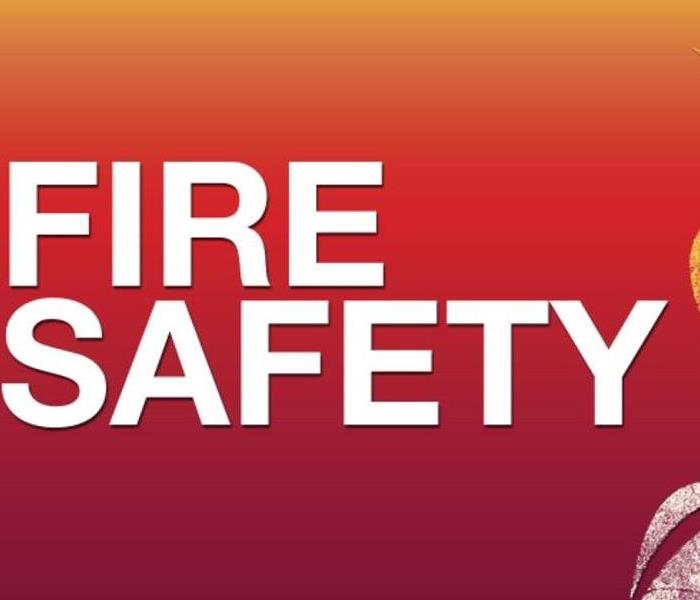 Fire safety is important!
Fire safety is important!
Did you know that if a fire starts in your home you may have as little as two minutes to escape? During a fire, early warning from a working smoke alarm plus a fire escape plan that has been practiced regularly can save lives. Learn what else to do to keep your loved ones safe!
Top Tips for Fire Safety
Install smoke alarms on every level of your home, inside bedrooms and outside sleeping areas.
Test smoke alarms every month. If they’re not working, change the batteries.
Talk with all family members about a fire escape plan and practice the plan twice a year.
If a fire occurs in your home, GET OUT, STAY OUT and CALL FOR HELP. Never go back inside for anything or anyone.
Ask Annissa: How Do I Handle Sensitive Documents Damaged in a Fire Loss?
9/4/2018 (Permalink)
What’s the best way to handle and clean personal papers in a fire loss that have been damaged by soot and also smell? The homeowner wants to keep them and won’t let me throw them away.
Personal papers like bills, canceled checks, credit card statements and everyday magazines have no value in the eyes of the insurance company and they often don’t want to pay for them to be cleaned or deodorized. However, they often have value to the homeowner.
The biggest problem with this is that paper can hold a lot of odor and may re-contaminate the house once everything is unpacked. So first off, we check with the homeowner and see if the paperwork is something that they can live without. Or is it really important and needs to be kept? Once you explain that the papers can hold a lot of odor and may cause recontamination of the house and belongings, this will sometimes make the homeowner more aggressive about putting them in the round file.
If the paperwork cannot be parted with and must go on the “keep it list,” then we dust them off and organize them into a large 11x14 inch spec bag. This is a heavy duty plastic bag that keeps the odor and contamination contained until the homeowner can photo copy or reprint the documents they want to keep. The cost to the insurance company to handle them this way is really no more than their cost would be to throw them away, so this keeps your adjuster and homeowner happy.
This also allows the homeowner to go through the papers at their convenience as they are dealing with a lot of pressing decisions in the first few days after a fire. Having one less pressing thing to have to handle right away can be a huge relief for them.
The Anatomy of a Fire: Understanding 3 Types of Fires & Effective Cleaning Techniques
9/4/2018 (Permalink)
According to the National Fire Protection Association, it’s estimated that some 370,000 home fires occur each year, costing close to $7 billion in total property damage. In many of these home fires, however, the fire starts and is contained in a certain area of a home or business. Even though containment eliminates the necessity for complete demolition and reconstruction, it is still necessary for proper cleaning of soot and smoke to commence, in order to restore the property to a preloss condition. Anatomy of a FireContrary to what many may believe, there is more than one type of fire — and the type of fire that occurred will dictate the appropriate cleaning method. The most prevalent types of fires are: high-oxygen fires, which produce dry soot; low-oxygen fires, which produce greasy, wet soot, and kitchen fires. Here’s a closer look at how to clean each type of fire:
- High oxygen: Dry sponges are a must. Follow this by applying a low-alkali detergent and then rinse thoroughly.
- Low oxygen: Use high-alkali detergents along with warm water to wash the walls and structures. Rinse, then paint over.
- Kitchen: These are often the most challenging fires to clean, as soot residue is difficult to detect. For this reason, cabinets, drawers and other appliances often need to be removed to adequately clean the area.
General Cleaning TechniquesSmoke and soot can penetrate paint, carpet, upholstery and clothes. While carpet can be deep cleaned and clothes can be taken to the dry cleaner, properly restoring walls, structures and objects is a different story. Here’s a look at some general cleaning techniques:- Personal protective equipment: Gloves, a protective mask, long-sleeved shirts and pants should be worn on site to minimize contact with ash.
- Remove contents: Remove contents from the house. While some contents may have to be discarded, others can be effectively hand cleaned. Cleaning contents in an ultrasonic machine is also an option with some items.
- Ventilate: Open windows and doors to remove odor.
- Beware of other contaminants: Lead and asbestos can turn a fire restoration job into an environmental restoration job if they’ve become disturbed.
- Hand scrubbing: Fire damage work is one of the most tedious types of repair work. It involves a lot of handwork, such as scrubbing walls and structures with sponges — and using chemicals and specialized restoration equipment, such as media blasting tools, in the event of heavy residue.
- Duct cleaning: Following restoration, a duct cleaning is required. That’s because smoke and soot have a tendency to become trapped within a home or business’s duct system. This can spread contaminants — and odors — to other areas of the home when in operation. Hence, a professional duct cleaning is necessary.
Techniques for Various Materials- Clothes and fabrics: A specialized dry cleaner is capable of restoring these items to preloss condition. Cleaning soot-contaminated clothing is somewhat of a science, and while a homeowner may be able to adequately restore clothing on his own, it’s always best to leave this to the professionals.
- Carpet: A professional carpet cleaning is a must in order to effectively remove contaminants and odor from the carpet.
- Building materials: Dry chemical sponges are your best bet for wallboard, plaster, wood and wallpaper. These will remove much of the soot and also prevent it from being lodged deeper into the material.
- Other materials: Sponges, towels and mops are ideal for cleaning tile, glass, metal and certain appliances. Since these aforementioned objects are less porous than drywall, for example, it’s OK to use a wet or dampened sponge or cleaning tool. Plus, there’s no risk of lodging contaminants deeper into the material.
- Specialty cleaning tools: Ultrasonic cleaning machines can come in handy as they can adequately clean non-porous items quickly and efficiently, compared to hand cleaning.
When it comes to a fire damage situation, you also need to remember how vulnerable the homeowner is in the situation. While any type of home catastrophe is never welcome, a fire has the potential to be the most devastating. With that in mind, also be sure to work on your customer service skills, communicate effectively and regularly with the homeowner to determine his needs throughout the process, and keep him up to speed on the project’s progress. Where a water damage situation can be restored in as little as three days, it’s not uncommon for a fire damage situation to last several weeks — or even months if reconstruction is involved. Hence, proper cleaning and handling of a project is all the more important.
Dentist Abandons Practice After Fire Loss- Will Policy Proceeds be Recovered?
5/7/2018 (Permalink)
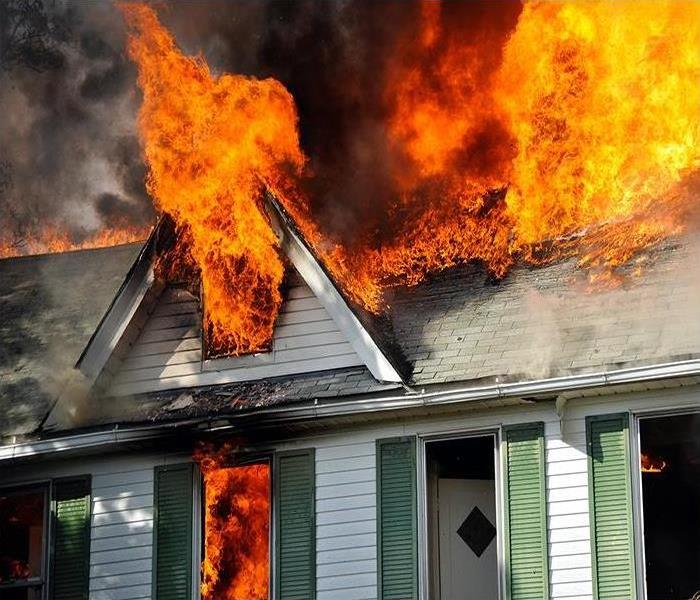 Fire & Smoke Restoration Technician | Odor Control Technician | Upholstery & Fabric Cleaning Technician | Water Damage Restoration Technician
Fire & Smoke Restoration Technician | Odor Control Technician | Upholstery & Fabric Cleaning Technician | Water Damage Restoration Technician
An Excerpt from Property Casualty 360 Q&A
Question: Our insured had total fire loss and is insured under a business-owners policy. The insured is a dentist and determined that as of this loss she would abandon this practice as she had other locations that were more productive.
Since there was a direct loss from a covered peril, but no period of restoration to speak of, will the insured recover any policy proceeds under business income coverage?
Answer: In order for business income coverage to be triggered, the insured must suffer an actual loss of business income due to the necessary suspension of operations during the period of restoration. If the dentist is not continuing the business at that location, and it is not going to be repaired or replaced, you are correct that there is no period of restoration, and there is also no loss of income due to suspension of operations, so there would be no business income coverage.
Fire Damage ? Call SERVPRO of Northern Summit County's 24/7 Emergency Service line - 330-650-4486
For information on SERVPRO of Northern Summit County fire damage services, click here.
Safety Tips When Preventing House Fires
4/11/2018 (Permalink)
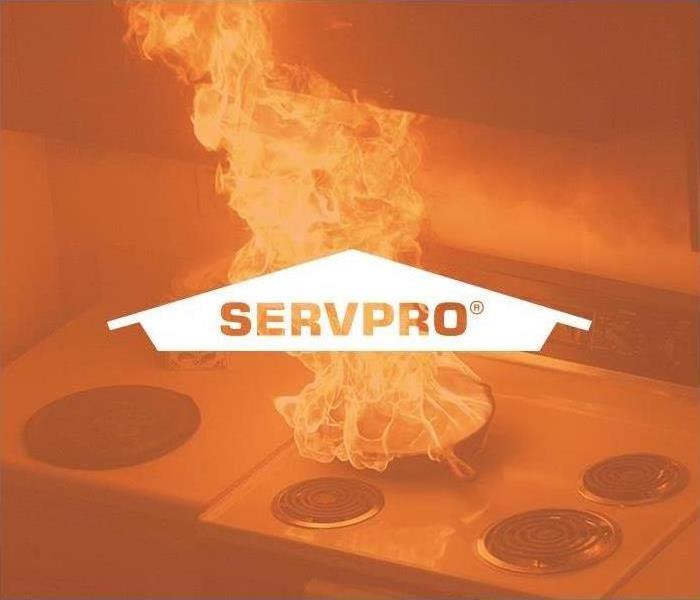 Have Questions? Call Us Today – 800-648-1212
Have Questions? Call Us Today – 800-648-1212
For our last blog post, "Homeowners policy. Fire coverage. What do I need?," we covered the following:
Insurance coverage is very important in protecting your home and belongings.
Know what you own- document everything in a video. Educate yourself on the policy you are buying and choose your agent based on your needs.
We also want you to consider the five most common causes of house fires:
- Cooking equipment
- Heating equipment
- Electrical distribution and lighting equipment
- Intentional fires
- Smoking materials
- Candles
In this blog post we will explain how you can reduce the risk of a fire starting in your home.
- Cooking equipment.
- Be alert when cooking and don’t leave food unattended
- DO NOT throw water on a grease fire- put a lid on the pan or powdery material such as baking soda to smother the fire
- If an oven fire flares up, turn the oven off and leave the door shut until the fire extinguishes itself
- Keep clothing, pot holders, paper towels and other flammable items away from fires
- Keep working smoke detectors in the house, and have a fire extinguisher nearby just in case
- Heating equipment.
- Keep anything that can burn at least three feet away from heating equipment, like the furnace, fireplace, wood stove, or portable space heater
- Maintain a three-foot “kid-free zone” around open fires and space heaters
- Turn off space heaters and make sure any embers in the fireplace are extinguished before going to bed or leaving home
- If you must use a space heater, place it on a level, hard and nonflammable surface (such as ceramic tile floor), not on rugs or carpets or near bedding or drapes; keep children and pets away from space heaters
- Make sure your fireplace is properly cleaned and checked before the cold weather season starts.
- Keep the fire in your fireplace by using a glass or metal fire screen large enough to catch sparks and rolling logs
- Make sure wood and coal stoves, fireplaces, chimneys, and furnaces are professionally inspected and cleaned once a year
- Electrical distribution and lighting equipment.
- Don’t overload outlets or electrical cords
- Make sure you have the right cord for the job – inside cords for inside, heavy duty/outside cords for outdoor use
- Don’t leave Christmas lights, Christmas trees, or halogen lights on overnight, or when not at home
- Consider having an electrician perform an annual checkup of your home’s wiring
- Intentional fires.
- Consider what could burn
- Remove overgrown vegetation
- Remove abandoned cars
- Secure vacant homes
- Watch for kids
- Get to know your neighborhood
- Report suspicious activity
- Work with your community
- Watch local businesses
- Organize a watch program
- Install and test smoke alarms
- Call 911
- Smoking materials.
- If you smoke, consider smoking outside
- Use wide, sturdy ashtrays to catch butts and ashes
- Look for cigarette butts under furniture and between seat cushions to make sure no lit butts have fallen someplace where they can’t be seen
- This one might be obvious, but nonetheless, don’t smoke in bed, when you’re tired, or around medical oxygen
- Candles.
- Never leave a candle burning near flammable items
- Never leave a candle burning in a child’s room or an unoccupied room
- Make sure candles fit securing into candle holders so they won’t tip over
- Blow out any candles before leaving a room or going to sleep
You can follow every piece of advice above, and the chances are positive that you’ll avoid any type of fire in your home. However, even though the risk is greatly reduced, accidents still happen.
The bottom line is that you need to make sure you have enough coverage in the event of a major loss.
Does your home have fire damage ? Call SERVPRO of Northern Summit County's 24/7 Emergency Service line at 330-650-4486 or Request Help Online
Homeowners policy. Fire coverage. What do I need?
4/4/2018 (Permalink)
In Ohio alone, there were 105 home fire fatalities reported in 2016.
A home fire is reported every 90 seconds in the United States.
One death occurs every 2 hours and 35 minutes, according to the National Fire Protection Association (NFPA).
Now is the time to review your coverage, Northeast Ohio.
But first, consider the five most common causes of house fires:
- Cooking equipment is the number one source of home fires and the second leading cause of home fire deaths – usually leaving pots or pans unattended on the stove while you run away to do something for “just a minute.” The NFPA says that 47% of all house fires start this way.
- Heating equipment accounts for 15% of home fires, specifically this time of year. Trying to heat the home with space heaters or chimneys that aren't properly cleaned are the leading causes of heating equipment fires.
- Electrical distribution and lighting equipment account for approximately 9% of home fires, and can come from a number of different origins. They can be caused by an equipment malfunction, from an overloaded circuit or extension cord, or from an overheated light bulb, space heater, washer, dryer or other appliance.
- Intentional fires account for approximately 8% of home fires. The majority of these fires are started outside but still average $1 billion in direct property damage.
- Smoking materials are on a downward trend, however, they still account for 5% of home fires and are the leading cause of home fire deaths.
Other common causes include candles, children playing with fire, and Christmas trees.
*Stay tuned for our next blog post covering House Fire Safety Tips for each "cause of fire" listed above.
Taking precaution will reduce the risk of a fire starting in your home, but the bottom line is you need to make sure you have enough coverage in the event of a major fire loss.
Fire insurance is a necessary part of your homeowners policy. If you have a comprehensive homeowners policy, fire coverage will be included. However, there are many different providers and policies, therefore a variety of coverage limits, deductibles and exclusions defining what is, and is not, covered.
If your property is insured for actual cash value, your fire coverage may be less than what is needed to replace your damaged structures and items.
You can, and should, very seriously consider insuring your property with replacement value coverage instead. This type of coverage will cover the cost of rebuilding a house similar to your previous one after a fire, and provides funds to replace damaged appliances, clothing, and furniture with new items.
KNOW WHAT YOU OWN. We highly recommend you do a video recording of your full house and document your contents.
Your homeowners policy provides the following coverage options to protect your home from fire (check your policy to make sure you understand any exclusions):
- Covers the structure of your home
- Covers additional structures on your property, including sheds, garages and outbuildings
- Insures the contents, or your personal belongings, in each of the structures, including furniture, appliances, electronics, clothes, etc.
- Provides for living expenses if a fire displaces you and your family for a period of time, including rent or hotel expenses
Choosing the right insurance company is incredibly important, but even more important is selecting the best insurance agency to service your needs, and educating yourself on what you are buying.
Does your home have fire damage ? Call SERVPRO of Northern Summit County for help - 330-650-4486 or Request Help Online.
Renters Insurance and a Squirrel On Fire: What You Need to Know
1/11/2018 (Permalink)
 Blow torch the fur, they said. It'll be great, they said. One massive fire later... Better call SERVPRO.
Blow torch the fur, they said. It'll be great, they said. One massive fire later... Better call SERVPRO.
It's been proven, Summit County, that using a blowtorch to remove the fur of a squirrel is not an intelligent thing to do. Renter's insurance, however, is absolutely an intelligent thing to do, especially if you insist on using a blowtorch on your rented property to remove the fur of a squirrel rather than use a knife to skin the thing.
$300k renters insurance settlement proves you shouldn’t blowtorch a squirrel, a piece written by Marc Christopherson and published on LiveInsuranceNews.com, tells its readers the crime, the consequences and the solution of blow torching a squirrel on rental premises and setting afire multiple units of the apartment complex. What I want our readers to pay attention to is the insurance company's role in this situation and understand the impact of having renters insurance.
To keep it simple, they believed the blow torch would remove the fur from the squirrel so they could eat it as their main course meal. They did not intend to light on fire their apartment unit as well as those around theirs, but that is precisely what happened, causing $2 million in damage.
Naturally, the complex owners sued the couple for the damage costs and the case moved its way around the appeals court, never reaching an agreement until about 4 years later.
Finally, in August of 2016, the apartment complex and the tenant's renters insurance company agreed on a settlement of $300,000, which would be paid by the insurance company to the complex owners. That is not exactly the $2 million settlement the complex wanted, but you can't have it all, I guess.
The fact to take away from this story is that without renters insurance, who knows where this couple would be now. $300,000 from their insurance policy compared to $2 million from who knows where, having their renters insurance, an annual or monthly price that is very affordable, saved their you-know-what's in the end.
But, seriously, blow torching a squirrel ? Kids, don't try this at home. Actually, I take that back- kids and adults, don't try this ever.
For more information on this story, follow this link.
Do you have fire damage to your home or business ? No matter the cause, squirrel or oven grease, we will help. Call us today at 330-650-4486, or request help online.
Include Safety in Your Thanksgiving Holiday
11/15/2017 (Permalink)
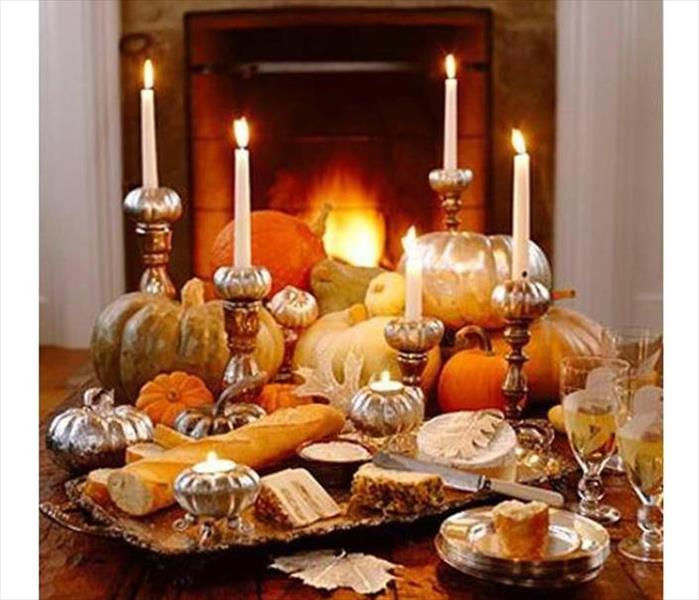 Candles cause an estimated 15,600 house fires, 150 deaths, and 1,270 injuries each year. Never leave a candle unattended.
Candles cause an estimated 15,600 house fires, 150 deaths, and 1,270 injuries each year. Never leave a candle unattended.
Especially during the holidays, the kitchen is the heart of the home. From baking and decorating cookies to testing family recipes, keeping kitchen fire safety at the top of your mind is a must- certainly when there is a lot of activity and people in one space.
Some Thanksgiving not-so-fun facts:
- Thanksgiving is the peak day for home cooking fires, followed by Christmas Eve/Day.
- In 2015, U.S. fire departments responded to an estimated 1,760 home cooking fires on Thanksgiving.
- Unattended cooking was the leading contributing factor in cooking fires and fire deaths.
With that said, here are some safety tips for the 2017 Thanksgiving holiday:
- Stay in the kitchen/home when you are cooking so you can keep an eye on the food.
- Make sure kids stay away from the stove and oven.
- Keep the floor clear so you don’t trip over kids, toys, pocketbooks or bags.
- Be sure electric cords are not dangling off the counter within easy reach of a child or pet.
- Keep matches and utility lighters out of the reach of children.
- Never leave children alone in room with a lit candle.
- Make sure your smoke alarms are working.
Caution is not a buzz kill. A house fire, on the other hand, is.
Have a happy and safe Thanksgiving holiday, Summit County!
Fire Safety: Unplug Household Appliances
9/14/2017 (Permalink)
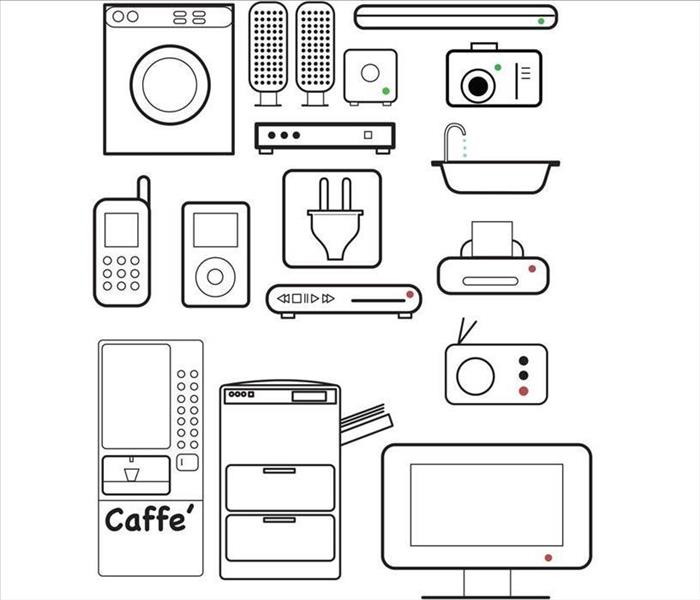 The consumption of household appliances worldwide is forecast to generate nearly 590 billion U.S. dollars in revenues by 2020.
The consumption of household appliances worldwide is forecast to generate nearly 590 billion U.S. dollars in revenues by 2020.
With electric appliances being so common in modern homes, it's easy to forget that there are very real risks and hazards associated with their use and even non-use.
Being safe when using electrical appliances, extension cords, light bulbs and other equipment is easy. It only takes one mistake to spark an electrical fire, but simple prevention measures can be effective solutions.
These safety tips can help keep all appliances operating safely and help you prevent unexpected fires in the home:
- Ensure any appliances you purchase are approved by Underwriters Laboratories (UL) or another reputable consumer laboratory.
- Unplug unused appliances and store cords safely out of reach of pets, young children or hazardous situations.
- Appliances that generate heat, such as clocks, televisions and computer monitors, should be given several inches of clearance all around for good air circulation and cooling.
- Do not attempt amateur repairs or upgrades.
- Keep all electric appliances away from water such as sinks, bathtubs, pools or overhead vents that may drip.
- Do not operate any electrical appliance with wet hands or while standing in water.
- Keep clothes, curtains toys and other potentially combustible materials away from radiators, space heaters, heating vents and other heat sources.
Source: Stephanie Sage of Sage Restoration
To read more on this subject, click here.
Have Questions about Fire Safety? Do you have fire damage? Call Us Today – (330) 650-4486
Why a Fire Restoration Contractor Is the Way to Go
9/6/2017 (Permalink)
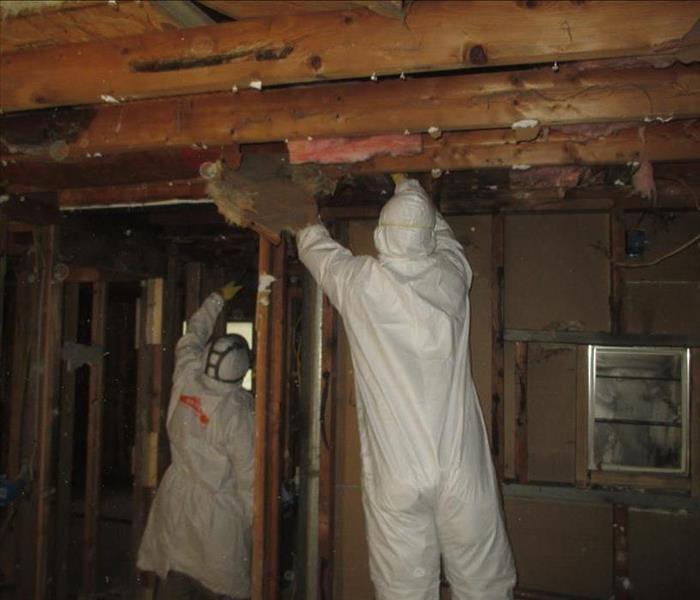 When fire & water damage strikes, a fast response is critical. We’re dedicated to responding immediately, day or night, to your Summit County property
When fire & water damage strikes, a fast response is critical. We’re dedicated to responding immediately, day or night, to your Summit County property
A fire restoration contractor can help you restore your home properly after a house fire.
When you hire a fire restoration company, it dispatches several fire restoration contractors, each of whom has the knowledge to use the tools necessary to complete the job. Their skills vary, from reducing the dangers in your home after a fire to preventing secondary water damage. Hiring a fire restoration contractor is an excellent idea because it allows the experts to work on many different things at once, which lets you focus on other things like insurance matters.
A Fire Restoration Contractor’s Equipment
A fire restoration contractor has a variety of tools and the knowledge necessary to use them effectively. One example of this is an ozonation machine. This machine generates ozone, a toxic gas, which fills the house and can partially reverse the effects of smoke odor from embedding itself in everything. These machines are expensive and dangerous, and only a qualified professional should use them.
Getting a referral from your insurance provider is an excellent idea. This ensures that the company you hire has contractors that actively implement sound business practices and can restore your home properly and in accordance with any applicable laws. In addition to this, this method allows you to be sure that the contracting company and your insurance provider can work well together and agree on an appropriate settlement.
Have Questions about Fire, Smoke, or Soot Damage?
Call Us Today – 330-650-4486
How to Keep Safe During a House Fire
8/17/2017 (Permalink)
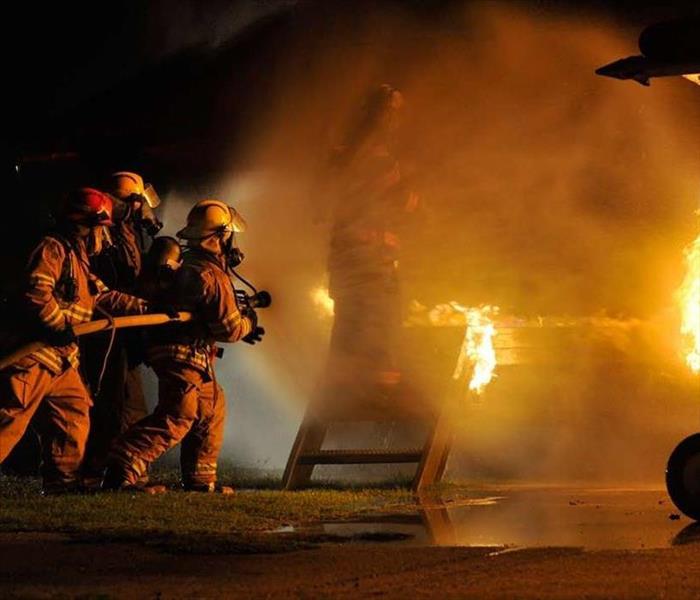 In less than 30 seconds a small flame can turn into a major fire. It takes minutes for smoke to fill a house or for it to be engulfed in flames.
In less than 30 seconds a small flame can turn into a major fire. It takes minutes for smoke to fill a house or for it to be engulfed in flames.
You may not think you'll ever fall victim to a house fire, but it's better to be prepared and know what to do to avoid panicking if it happens to you. To increase your chances of survival, follow these steps:
Keeping safe in your house during a fire:
- React as soon as you hear your smoke alarm go off. If you hear your smoke detector or see fire, exit your home as safely as possible. Do not stop to grab your belongings. Your only concern should be to get out as quickly as possible.
- Safely exit through doors. If you see smoke under the door, do not open the door to escape. If you do not see smoke, put the back of your hand to the door to feel for heat. If it is cool, open slowly and pass through. If you see fire, close the door to protect yourself from the fire and search for another exit.
- Prevent yourself from smoke inhalation. Get low to the floor and crouch or crawl on your hands and knees to evade the toxic smoke, avoiding disorientation and unconsciousness. If you must walk through the smoke, cover your nose and mouth with a shirt or towel.
- Stop drop and roll if your clothes catch fire. Immediately stop what you're doing, drop flat on to the ground and roll around until you smother the fire. Cover your face with your hands as you're rolling to protect yourself.
- Ward off the smoke if you can't get out. If you cannot escape, you can always reclaim some measure of control and stay safe, even if you feel trapped. Close the door and cover all vents and cracks with a cloth or tape to keep the smoke out.
- Call for help from a second story window. If you are trapped in a second story room, do what you can to get yourself to an area where people will be able to hear or see you. Take a sheet- preferably white- and hang it out the window to signify you need help. Be sure to close the window to the fresh oxygen doesn't draw the fire towards you. Put a blanket or towel at the base of the door to prevent the smoke from coming underneath.
- Escape from a second story window if you can. If you have an escape ladder, toss it down the side of the house. If you must go out the window, look for a ledge you can get yourself onto and hang down from your hands, facing the side of the building. Let yourself fall to safety.
What to do once you exit your home:
- Do a head count. Make sure everyone is accounted for. If anybody is missing, only re-enter the building if it is safe to do so. Tell the first responders immediately on their arrival if you are afraid someone is missing.
- Call 911. Use your cellphone or call from a neighbor's house.
- Do an injury assessment. After making the call and the resources are coming, check yourself and your family for any injuries. If there are, do what you can to address them until the fire department arrives.
- Get away from the structure. Keep a safe distance between you and the fire.
Preventing future house fires:
- Form and practice your family's escape plan. Have a plan of escape in the event of a fire. Practice at least twice a year to get comfortable with the routine. Plan to find two ways to escape from each room. Practice escaping by crawling, being in the dark and having your eyes closed.
- Make sure your home is prepared. Check your smoke detectors are working and always have fresh batteries. Make sure your windows can easily be opened and that screens can be quickly removed. Everyone in your family should be able to open and close all windows. Buy reliable collapsible ladders in case of higher level escapes.
- Practice safe behaviors. Teach your children that fire is a tool, not a toy. Always be in the kitchen when you're cooking. SO not smoke in the house and make sure you put out your cigarettes entirely. DIspose of any electronics with frayed wires. Avoid lighting candles unless they're directly in your line of vision. Always check that the gas is turned off as well as any other wired electronics. Finally, try to use a lighter instead of matchsticks.
For more information as well as a community Q&A, click here for the source of the above information.
Fire Damage Cleanup
8/14/2017 (Permalink)
 SERVPRO has the experience, the expertise, and the advanced training that enables us to get your property restored quickly and thoroughly.
SERVPRO has the experience, the expertise, and the advanced training that enables us to get your property restored quickly and thoroughly.
Fire damage clean up is an arduous process that often requires the proper industrial equipment and time. A standard vacuum cleaner is rarely enough. In addition, time is of the essence. In the wake of a fire, when victims are faced with insurance matters, arrangements for interim housing, and possible health concerns, homeowners are unlikely to make salvage efforts the top priority. Sadly, this could present a costly dilemma. In these cases, the services of a certified fire restoration company are invaluable.
The Institute of Inspection, Cleaning and Restoration Certification (IICRC) states that delays in fire damage clean up can have serious consequences. In addition to the obvious devastation created by heat, flames, and soot, water and smoke are powerful contaminators and destructors in their own right. Immediate intervention is critical to minimize exposure to these damaging agents in hopes of limiting restoration costs.
In addition to the structural destruction caused by the flames, acidic soot alone can cause irreparable harm to a home’s interior and belongings. But the problems don’t end there. Odor removal can present another challenge, and ceiling or box fans alone are not always powerful enough to disperse the smell of smoke. Water damage caused by first responders in an effort to extinguish the inferno further complicates matters.
For more information on fire cleanup and how to choose a restoration firm to do the damage cleanup, visit the IICRC website.
Do you need fire damage cleanup? Call our 24/7 Emergency Service line at (330) 650-4486, or request online help.
Tips on How to Prevent Kitchen Fires
7/24/2017 (Permalink)
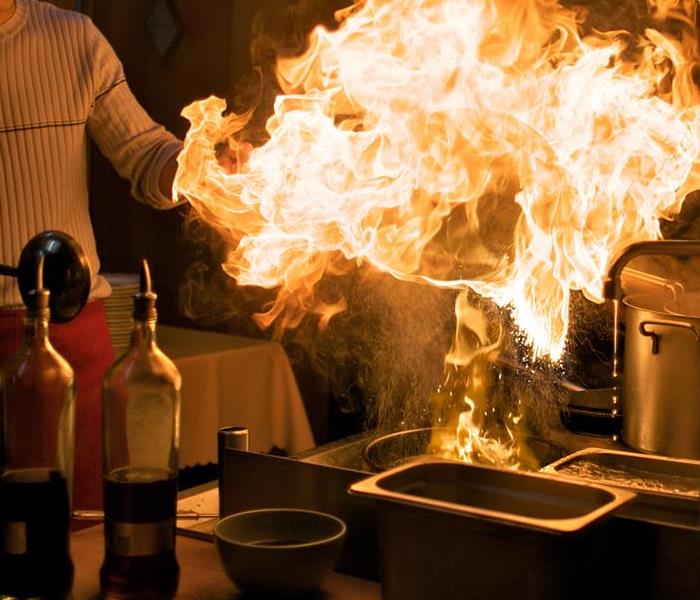 Cooking equipment was involved in an annual average of
19% home fire deaths, 44% reported home fire injuries, and $1.1 billion in property damage.
Cooking equipment was involved in an annual average of
19% home fire deaths, 44% reported home fire injuries, and $1.1 billion in property damage.
Kitchen fires are the most common cause of household fires. From grease spills to stray dishtowels, a simple overlook can set your house ablaze. Follow these tips to reduce your risks of a kitchen fire:
- Stay in the kitchen when cooking. Unattended cooking is the number one cause of cooking fires. If you must leave the stove unattended, turn off the heat and move the pan to a cool burner.
- Use a timer to remind yourself to check on your dish. Check your food regularly, whether you're simmering, baking, boiling or roasting.
- Keep the stove top clear. Keep dishtowels, oven mitts, paper towels -anything that can catch fire- away from your stove top.
- Dress for the occasion. Wear close-fitting clothes and tightly roll up sleeves when you're cooking. Loose clothing can come in contact with burners and catch fire.
- Wipe up spills. Cooking on a dirty stove or in a dirty oven and grease buildup can all start a fire.
- Don't overheat your oils. Overheated oil can start to smoke and bubble up, which can cause it to spill out and ignite.
- Wait for grease to cool before disposing! Tossing hot grease into your trashcan can send it up in flames. Wait for it to cool, or pour it into an old food can before tossing it out.
- Keep your smoke detector working. Ensure all are working and change the batteries twice a year (when you change your clocks for daylight savings time is a good reminder).
NOTE:
If a fire does erupt on your stove top, DO NOT try to smother it by sliding a lid over the pan. INSTEAD, turn off the burner and leave the pan uncovered until it has cooled. For an oven fire, turn off the heat and leave the door closed.
Should your home be damaged from a fire, our 24/7 Emergency Service can be reached at (330) 650-4486, or request help online.
Northern Summit County Smoke and Soot Cleanup
12/1/2016 (Permalink)
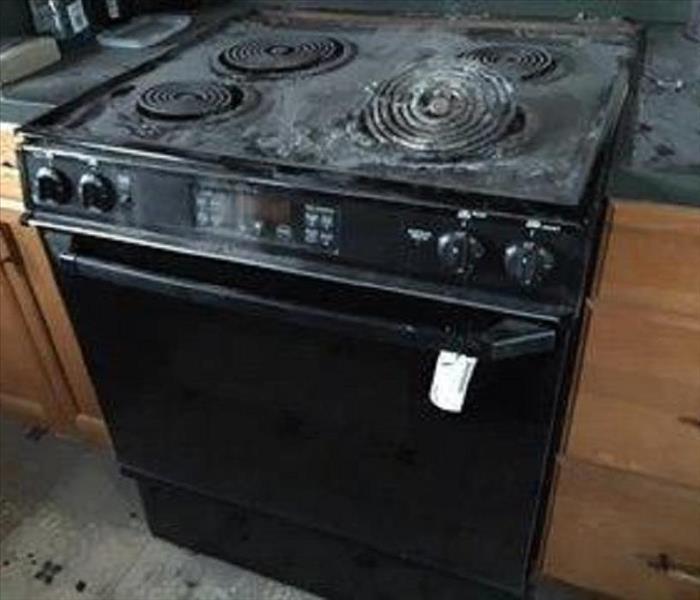 Smoke and Soot Damage Can Cause a Pervasive Odor in Your Northern Summit County Home.
Smoke and Soot Damage Can Cause a Pervasive Odor in Your Northern Summit County Home.
Smoke and soot is very invasive and can penetrate various cavities within your home, causing hidden damage and odor. Our smoke damage expertise and experience allows us to inspect and accurately assess the extent of the damage to develop a comprehensive plan of action.
Smoke and soot facts:
- Hot smoke migrates to cooler areas and upper levels of a structure.
- Smoke flows around plumbing systems, seeping through the holes used by pipes to go from floor to floor.
- The type of smoke may greatly affect the restoration process.
Different Types of Smoke
There are two different types of smoke–wet and dry. As a result, there are different types of soot residue after a fire. Before restoration begins, SERVPRO of Northern Summit County will test the soot to determine which type of smoke damage occurred. The cleaning procedures will then be based on the information identified during pretesting. Here is some additional information:
Wet Smoke – Plastic and Rubber
- Low heat, smoldering, pungent odor, sticky, smeary. Smoke webs are more difficult to clean.
Dry Smoke – Paper and Wood
- Fast burning, high temperatures, heat rises therefore smoke rises.
Protein Fire Residue – Produced by evaporation of material rather than from a fire
- Virtually invisible, discolors paints and varnishes, extreme pungent odor.
Our Fire Damage Restoration Services
Since each smoke and fire damage situation is a little different, each one requires a unique solution tailored for the specific conditions. We have the equipment, expertise, and experience to restore your fire and smoke damage. We will also treat your family with empathy and respect and your property with care.
Have Questions about Fire, Smoke, or Soot Damage?
Call Us Today – 330-650-4486
Holiday Fire Safety Tips
12/4/2015 (Permalink)
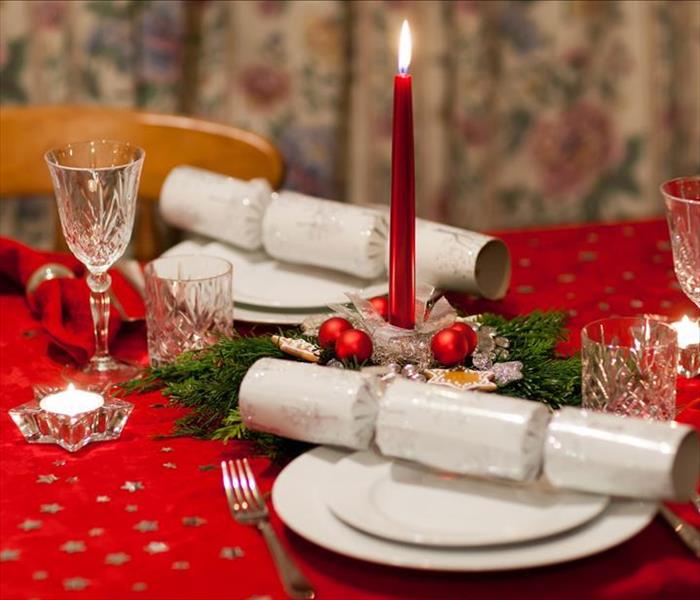 Be safe this holiday season!
Be safe this holiday season!
As the holiday season approaches, so does the peak time of year for cooking and candle fires. Cooking equipment is the number one cause of home and workplace fires. Thanksgiving, Christmas Day, and Christmas Eve are the three peak days for cooking fires. Candle fires peak on Christmas Day, Christmas Eve, and New Year’s Eve. SERVPRO reminds you and your family to stay safe this holiday season by following these fire safety tips:
Cooking Safety Tips
· Be especially careful when frying food. Frying is the greatest fire risk.
· Be aware that electric ranges cause more fires than gas ranges.
· Never leave cooking unattended. Unattended cooking causes 90% of kitchen fires.
· Clean thoroughly to prevent grease buildup.
Candle Safety Tips
· Please candles a safe distance from flammable objects. The leading cause of candle fires is placing candles too close to something that can burn, such as curtains or furniture.
· Do not leave candles unattended.
Smoke Detector Safety Tips
· Test smoke detectors once per month. Having working smoke alarms reduces one's chance of dying by fire by about half.
· Change batteries twice per year.
· Replace smoke detectors every 10 years.
· Be sure you have smoke detectors on each level of the home and placed near or inside each bedroom at a high point in the room.
Fire Extinguisher Safety Tips
· Follow the acronym P.A.S.S. – Pull the pin, Aim at the base, Squeeze the lever, & Sweep from side to side
· The best type of fire extinguisher for home use is a multipurpose "ABC" extinguisher, which uses a dry powder that is able to put out most types of fires.
· Fire extinguishers should be placed in plain sight close to ground level in areas of the home that are more prone to fires, such as the kitchen and garage.
· Keep a fire extinguisher in each occupied bedroom to help you and your family escape if a fire occurs during the night.
· Although fire extinguishers should last for 5-15 years, check the gauge regularly to make sure the needle is in the green area and inspect the pin, hose, and handle periodically.
Sources:
Akron Fire Department General Fire Safety presentation materials
http://www.nfpa.org/safety-information/for-consumers/causes/cooking
http://www.nfpa.org/research/reports-and-statistics/fire-causes/candles
Prevent Christmas Tree Fires This Holiday Season!
12/9/2014 (Permalink)
Christmas tree safety tips
From the National Fire Protection Association: http://www.nfpa.org/ Each year, fire departments respond to an average of 210 structure fires caused by Christmas trees. Carefully decorating Christmas trees can help make your holidays safer.
Picking the tree
- If you have an artificial tree, be sure it is labeled, certified, or identified by the manufacturer as fire retardant.
- Choose a tree with fresh, green needles that do not fall off when touched.
Placing the tree
- Before placing the tree in the stand, cut 1" - 2" from the base of the trunk.
- Make sure the tree is at least three feet away from any heat source, like fireplaces, radiators, candles, heat vents or lights.
- Make sure the tree is not blocking an exit.
- Add water to the tree stand. Be sure to add water daily.
Lighting the tree
- Use lights that have the label of an independent testing laboratory. Some lights are only for indoor or outdoor use, but not both.
- Replace any string of lights with worn or broken cords or loose bulb connections. Connect no more than three strands of mini string sets and a maximum of 50 bulbs for screw-in bulbs. Read manufacturer’s instructions for number of LED strands to connect.
- Never use lit candles to decorate the tree.
- Always turn off Christmas tree lights before leaving home or going to bed.
After Christmas
- Get rid of the tree when it begins dropping needles. Dried-out trees are a fire danger and should not be left in the home or garage, or placed outside against the home. Check with your local community to find a recycling program. Bring outdoor electrical lights inside after the holidays to prevent hazards and make them last longer.






 24/7 Emergency Service
24/7 Emergency Service

